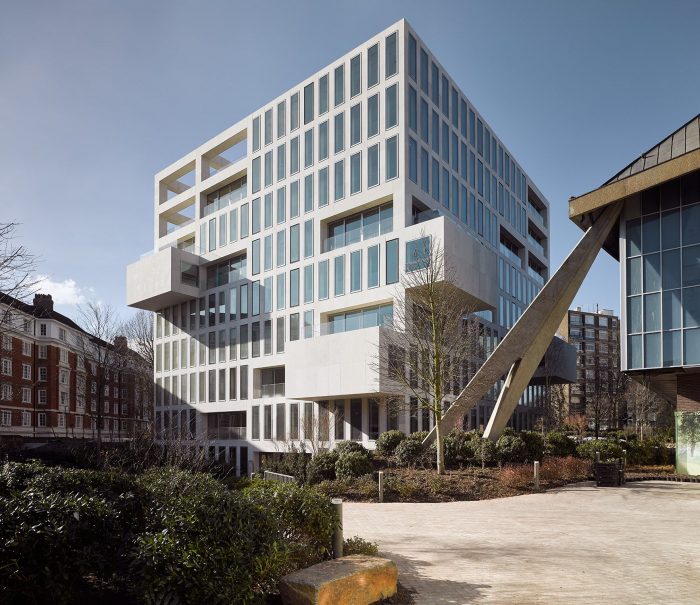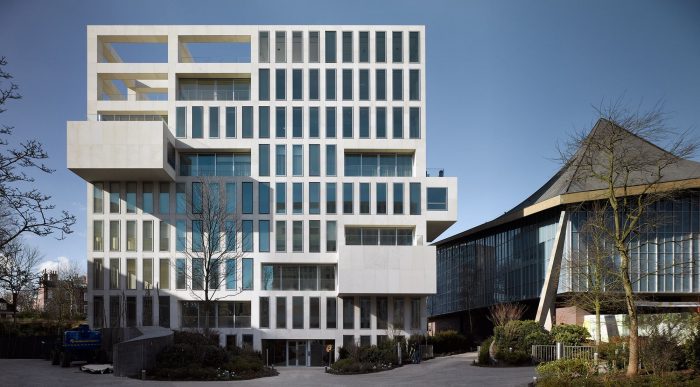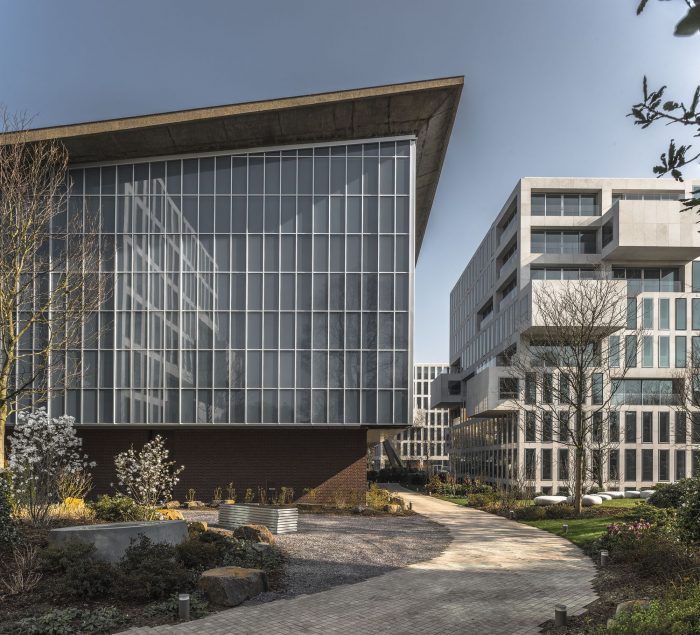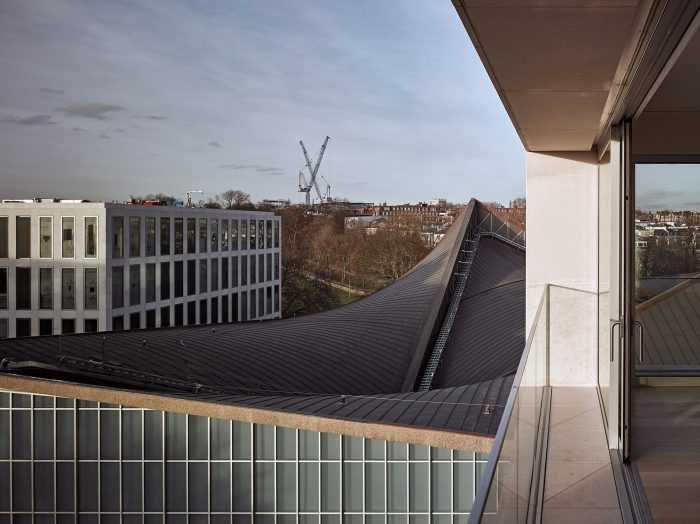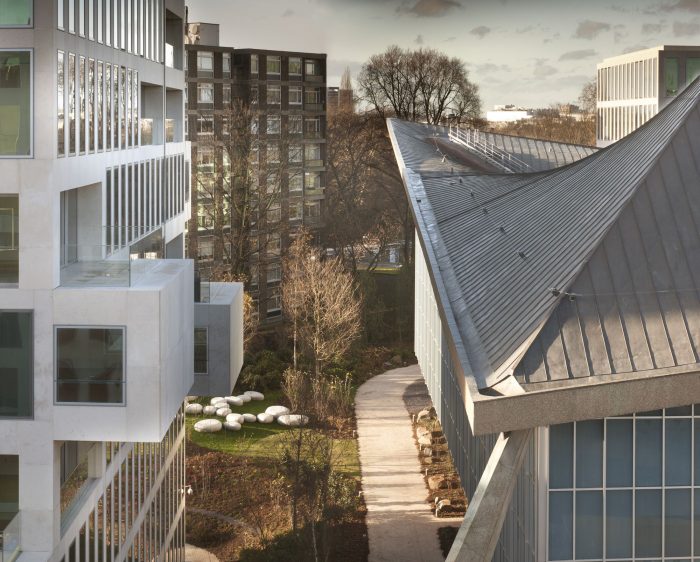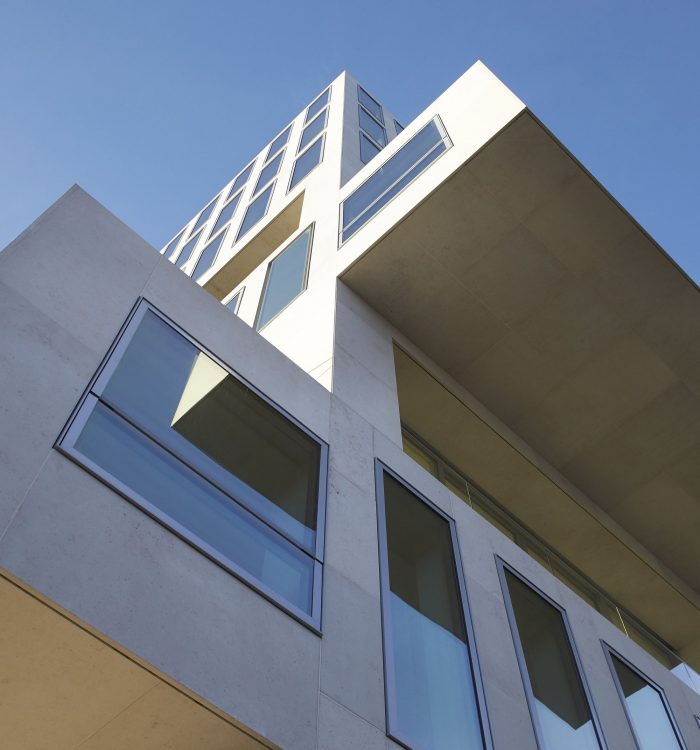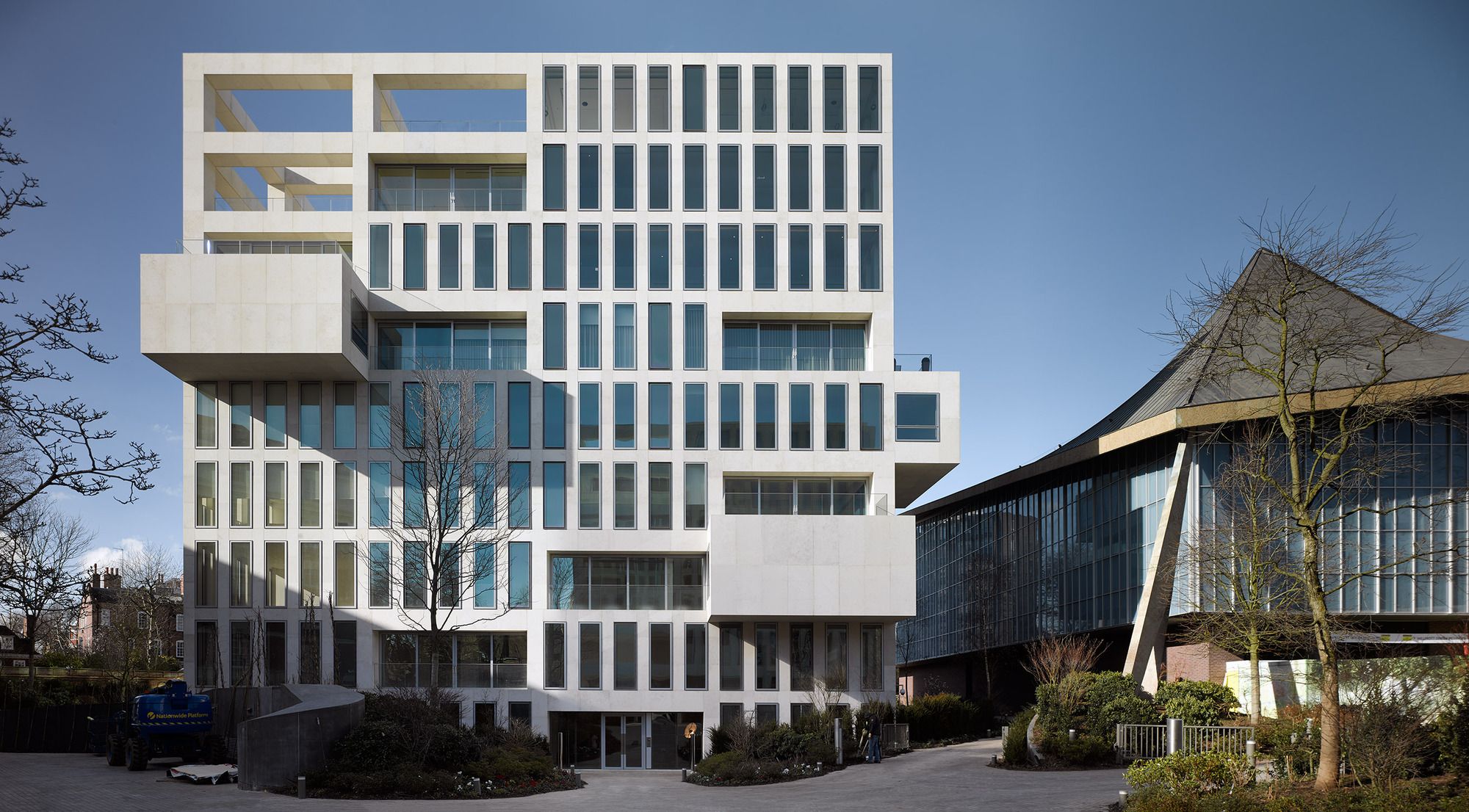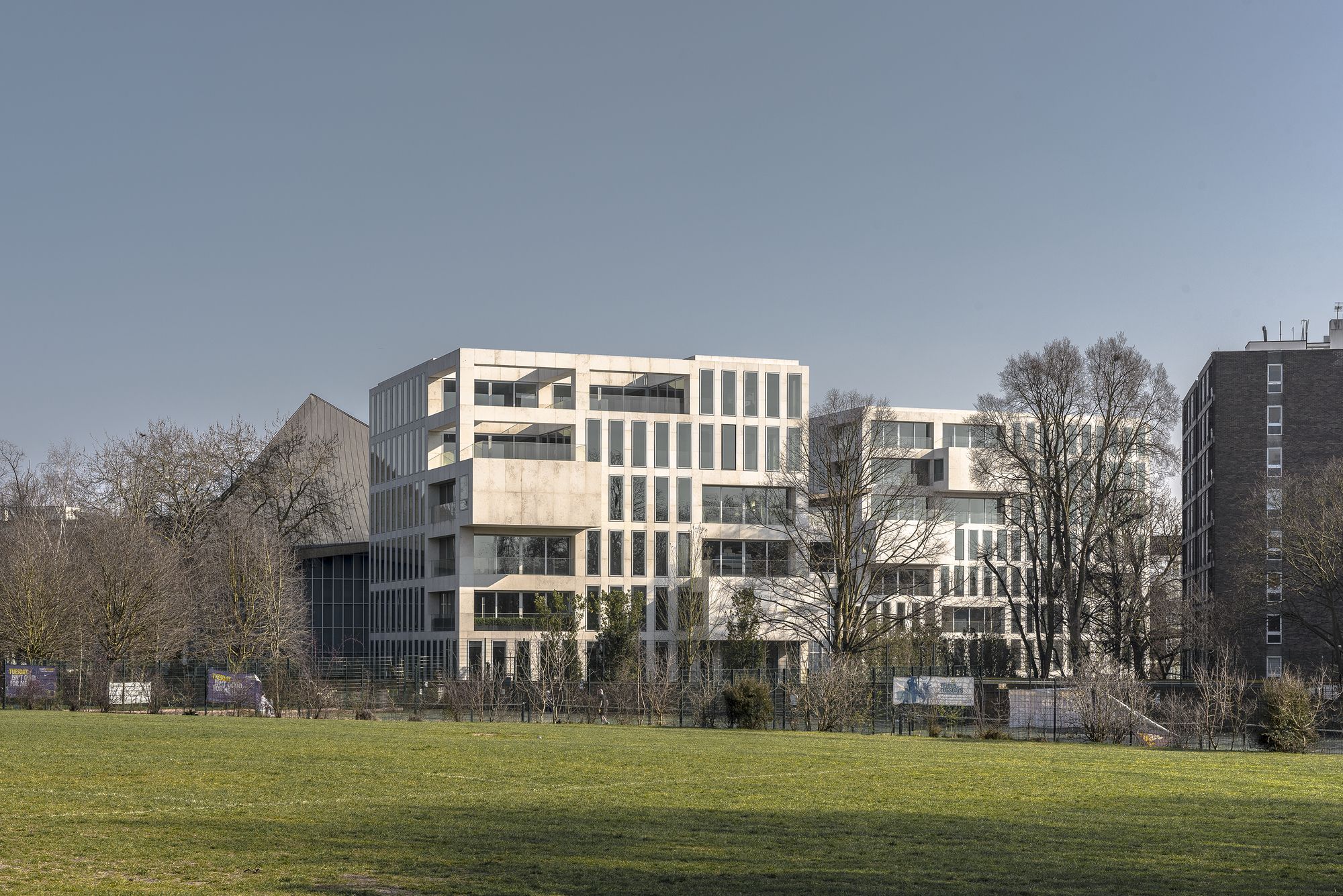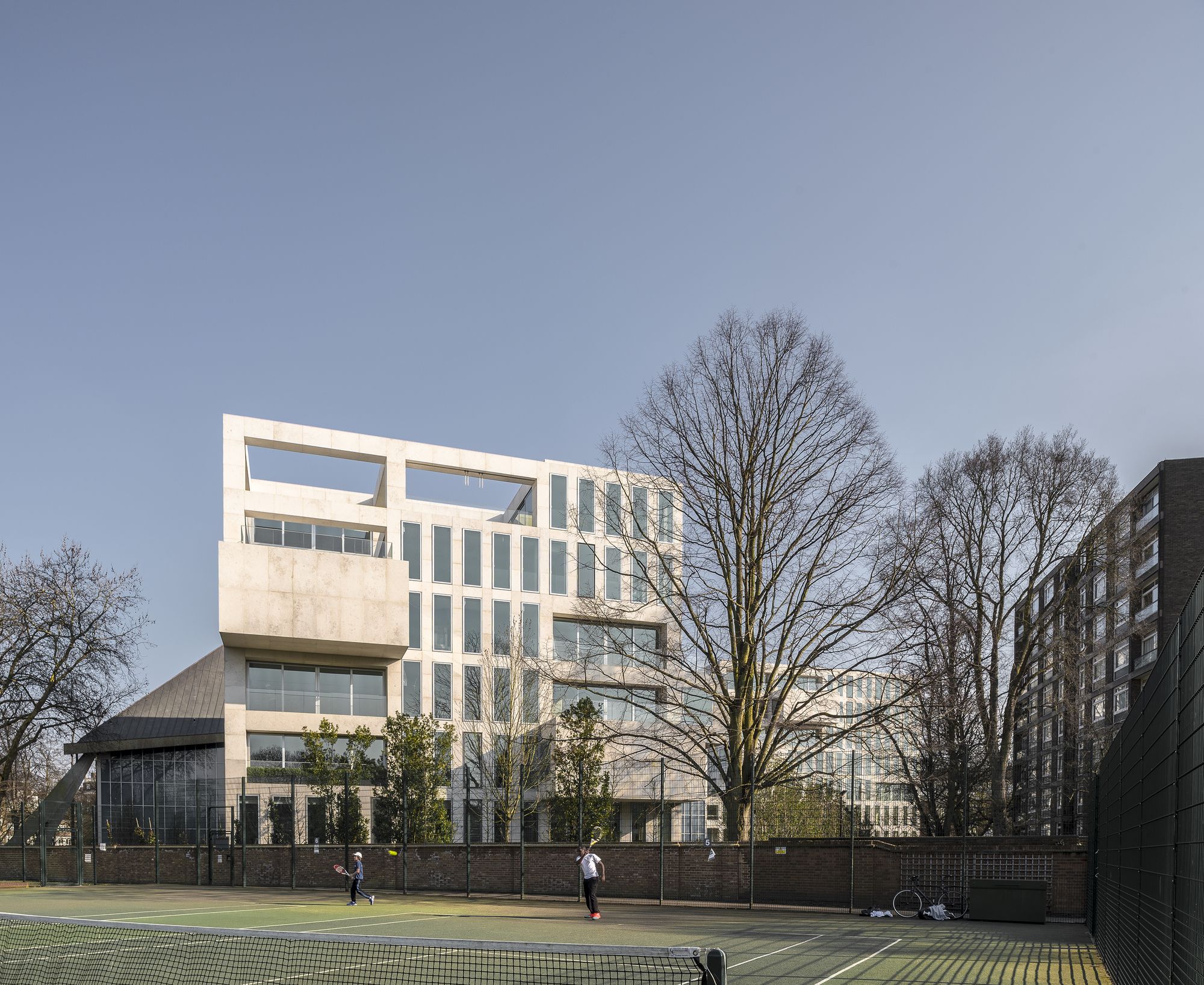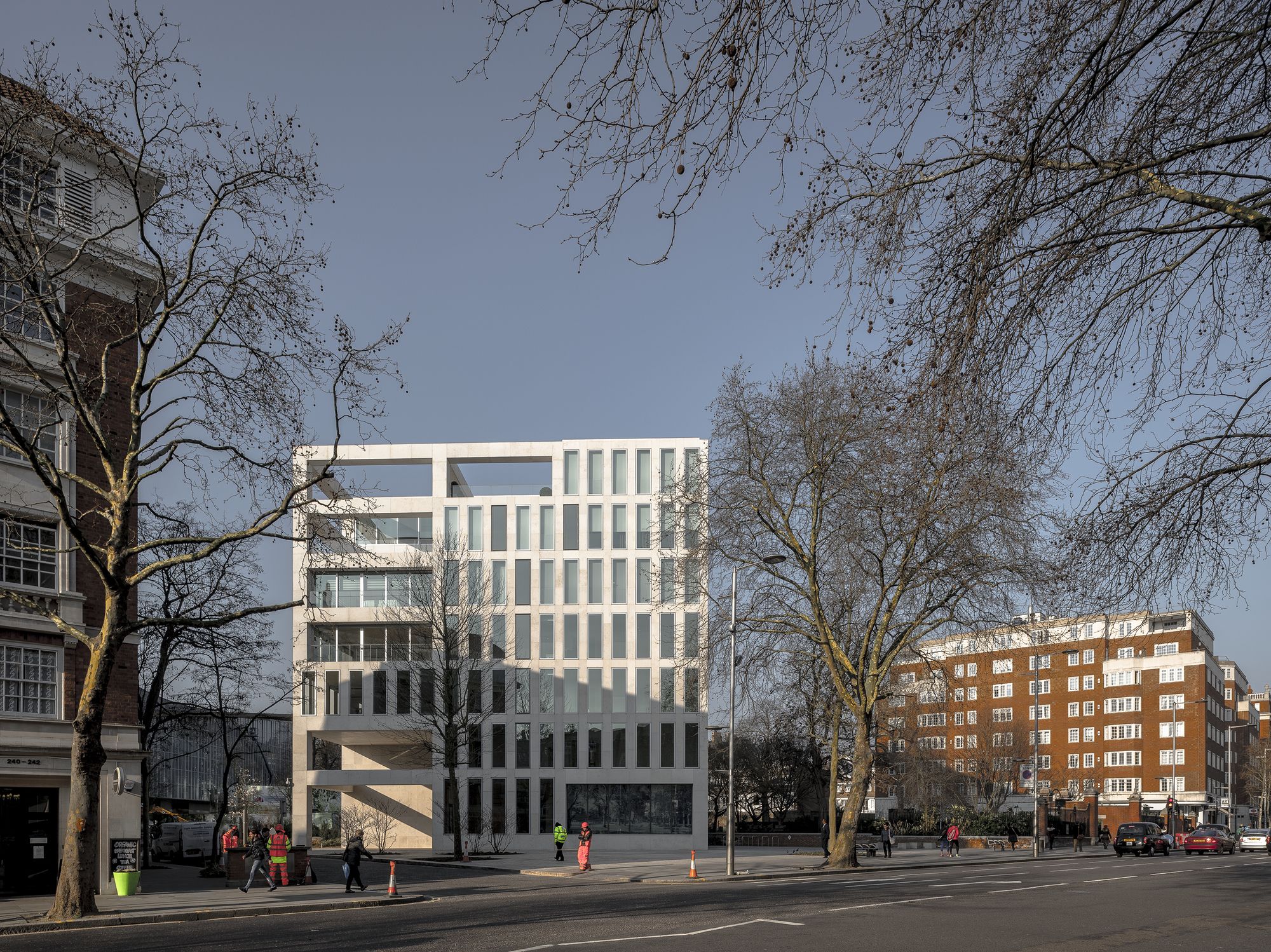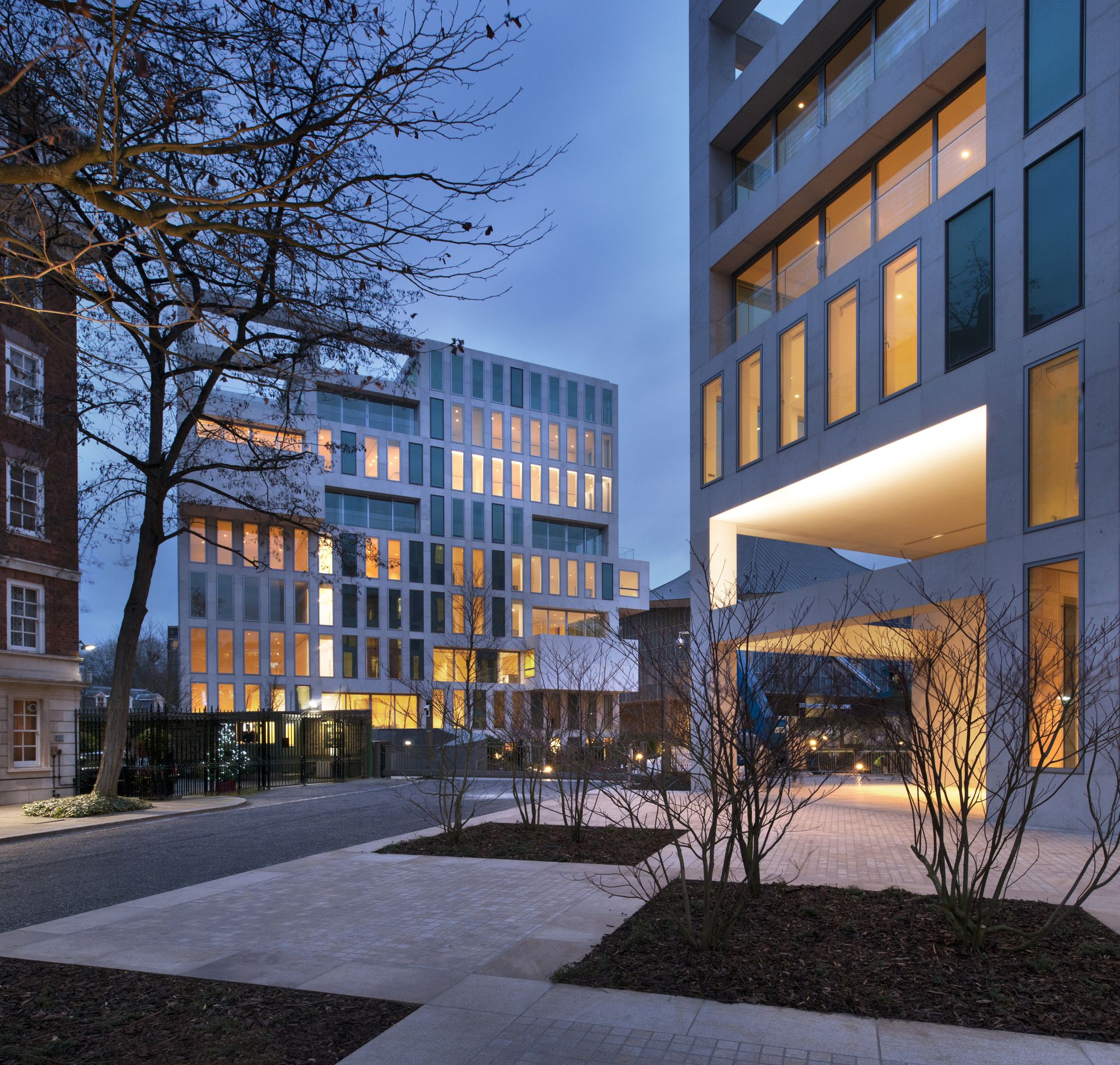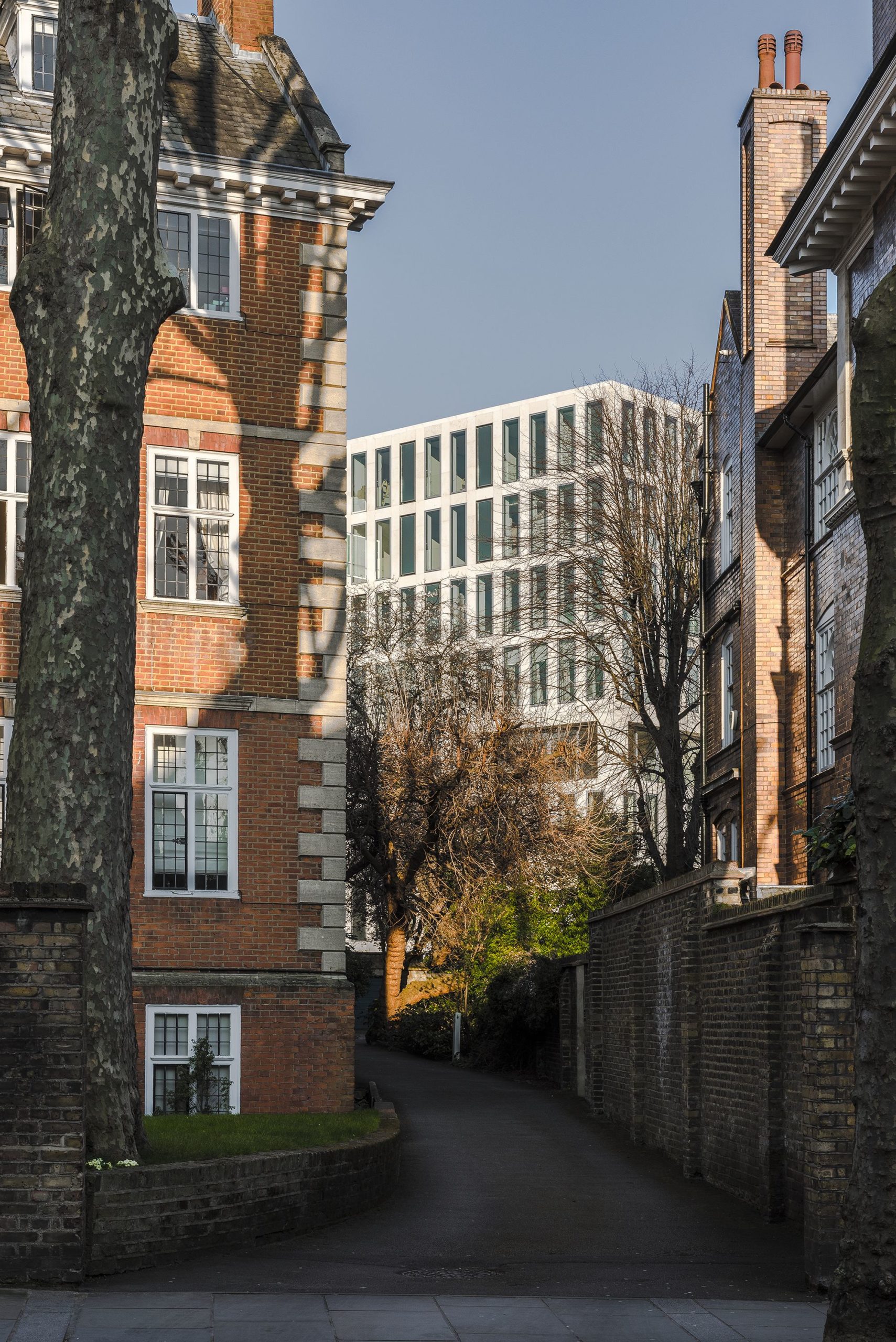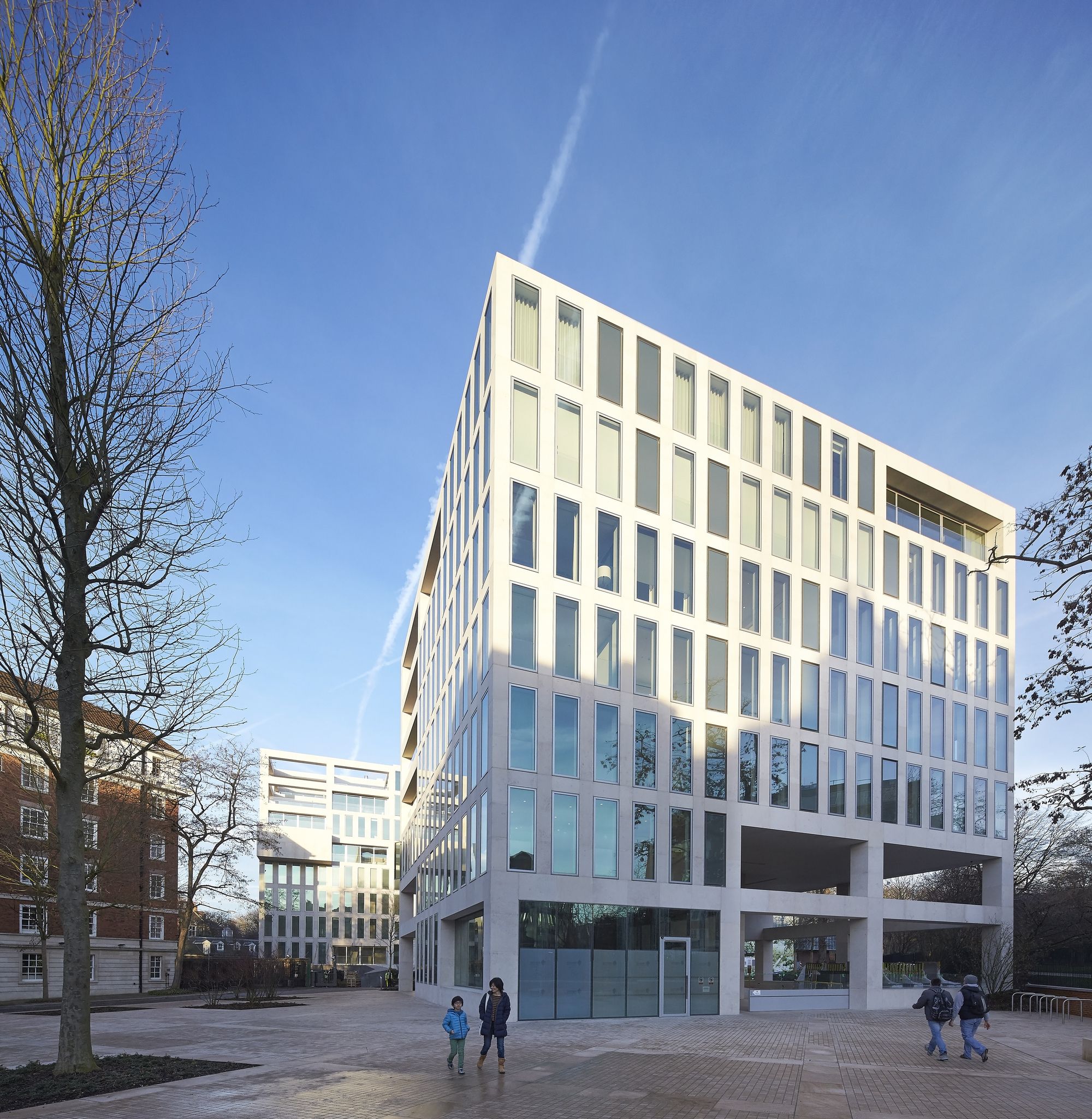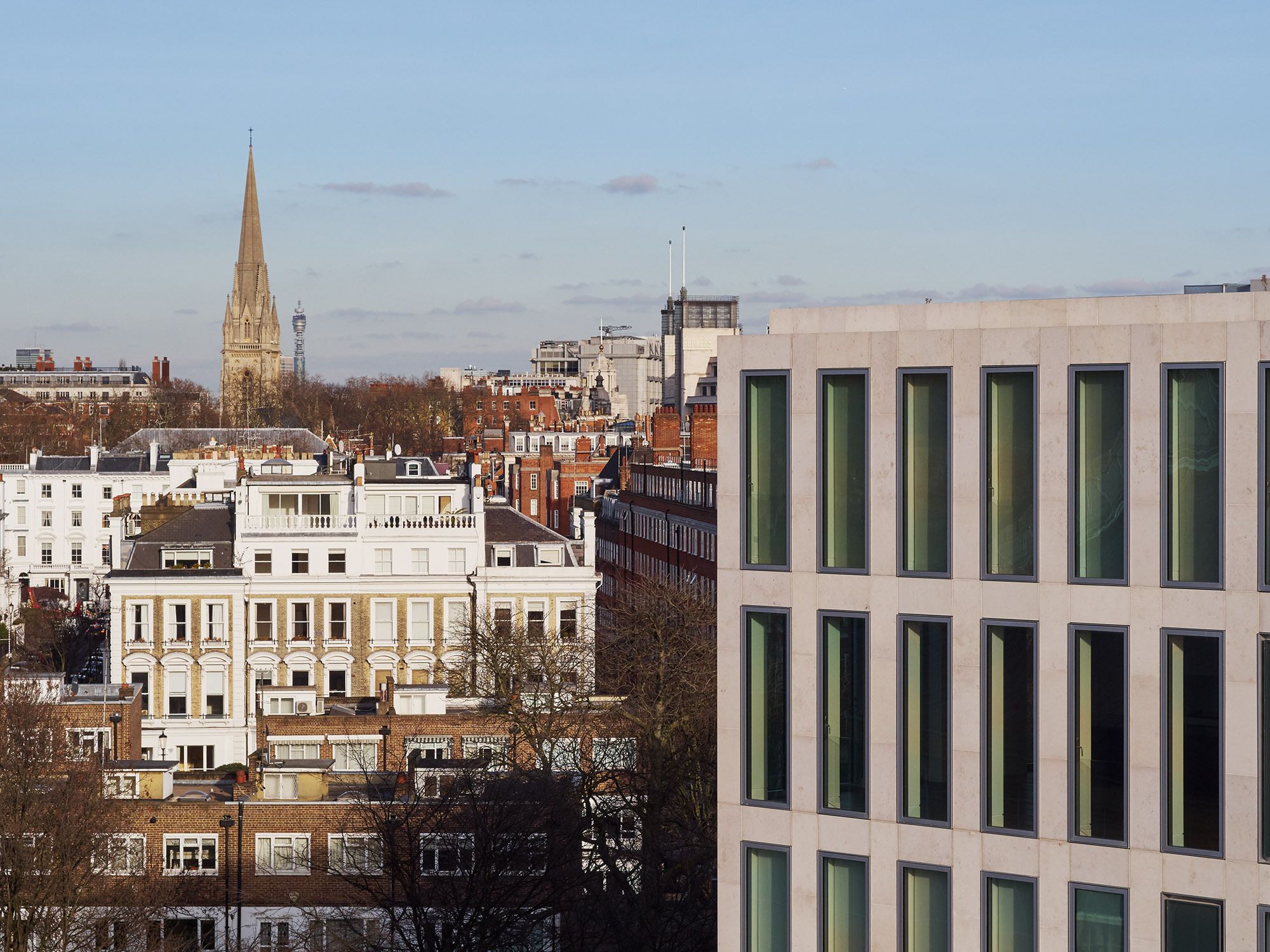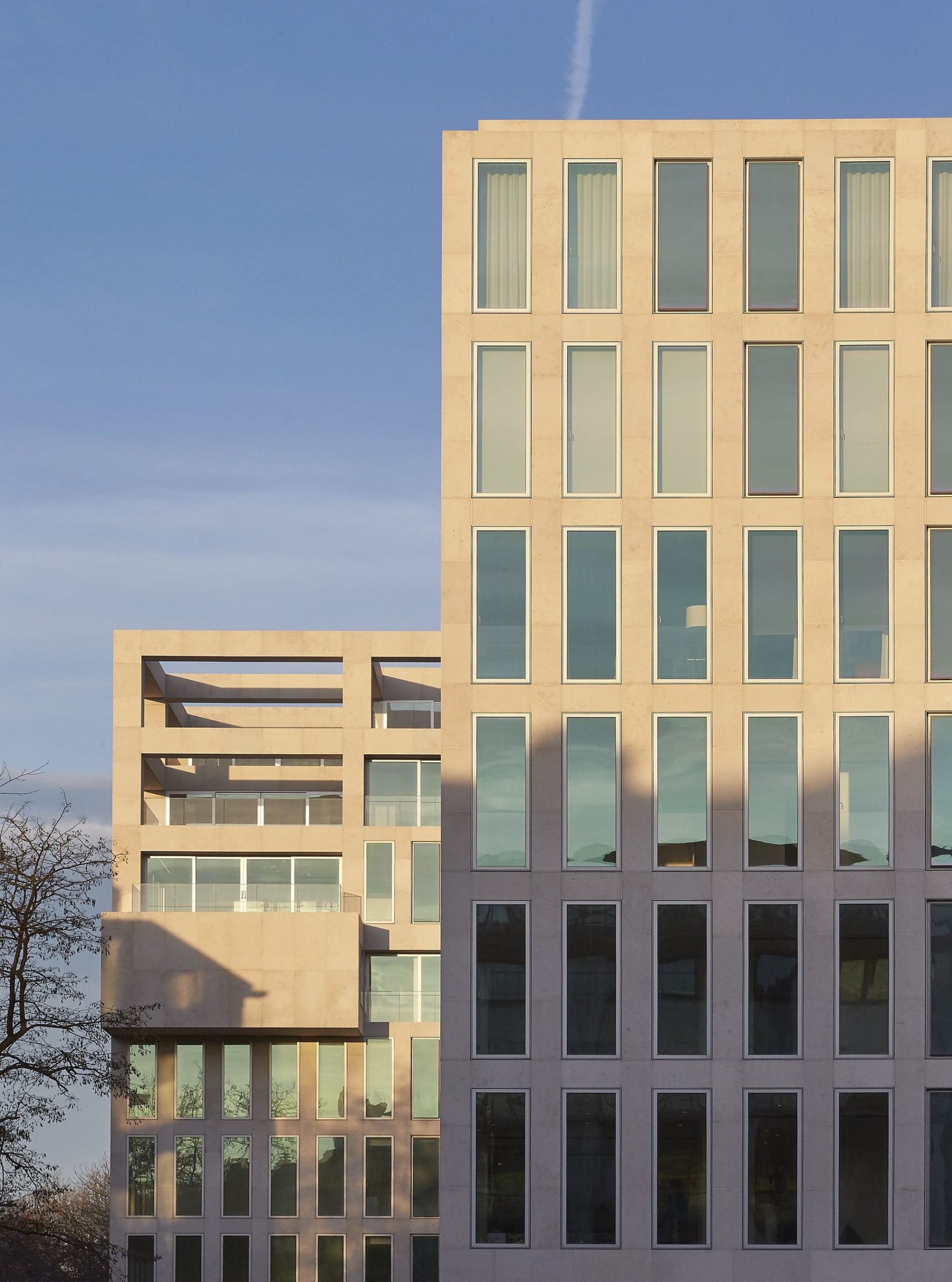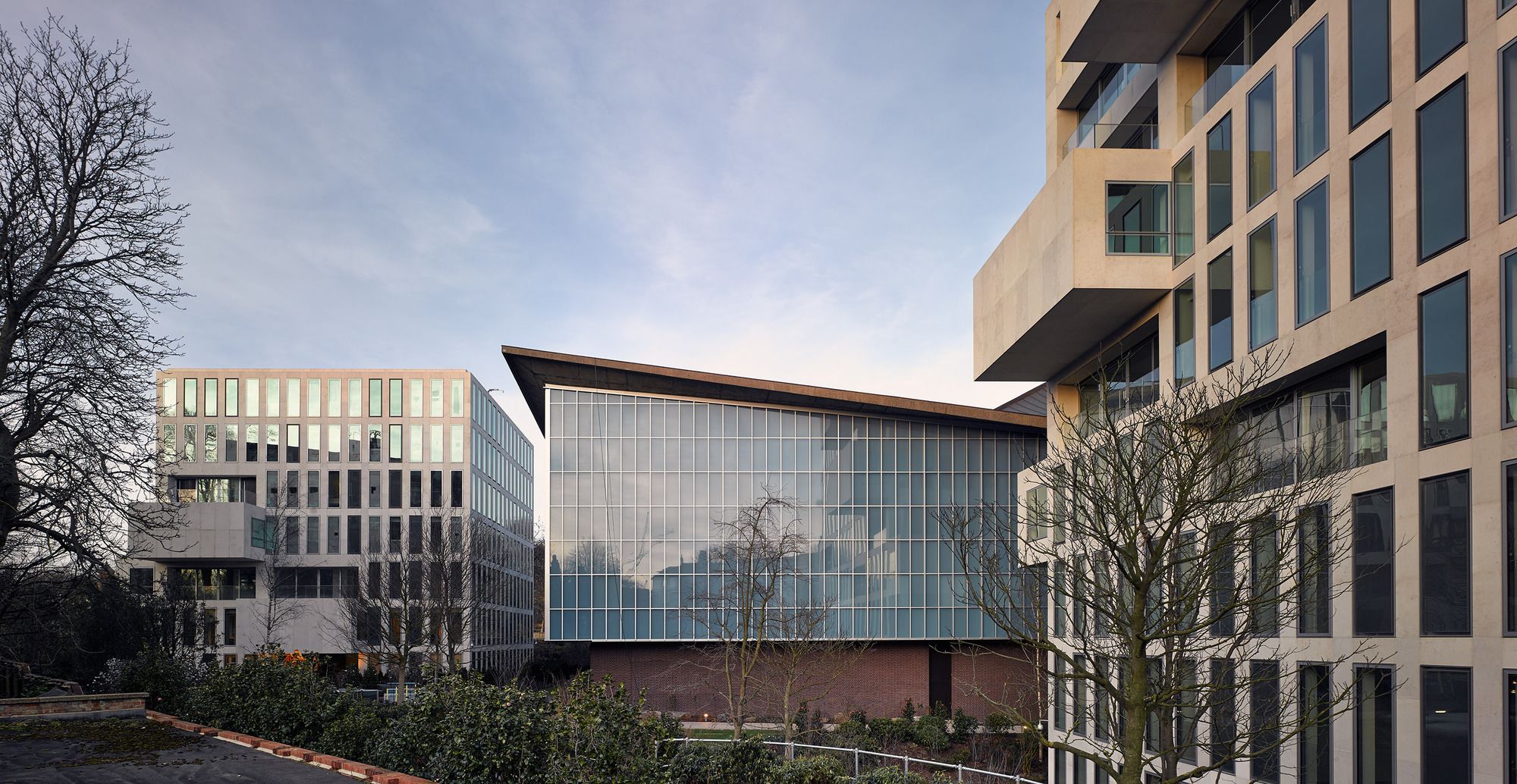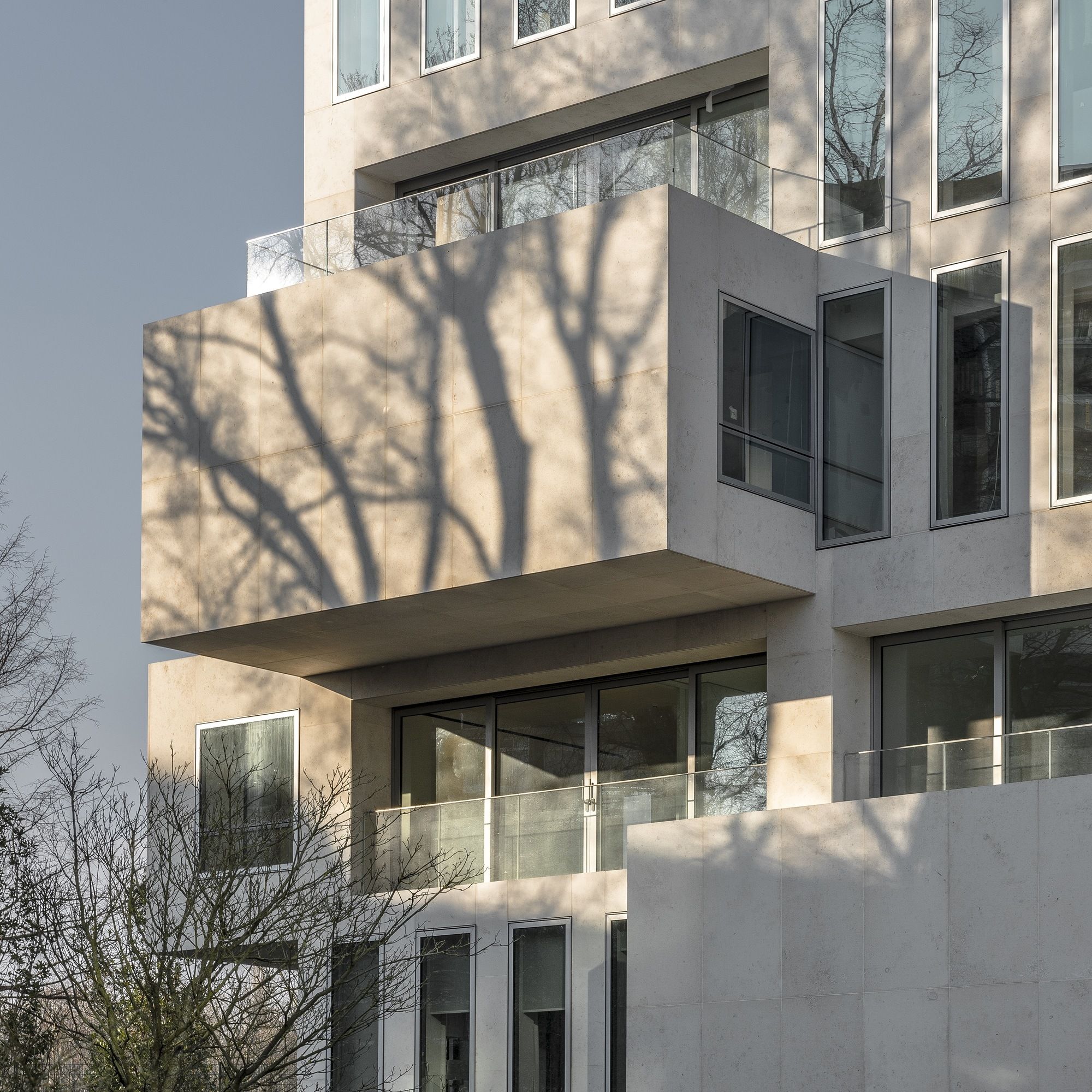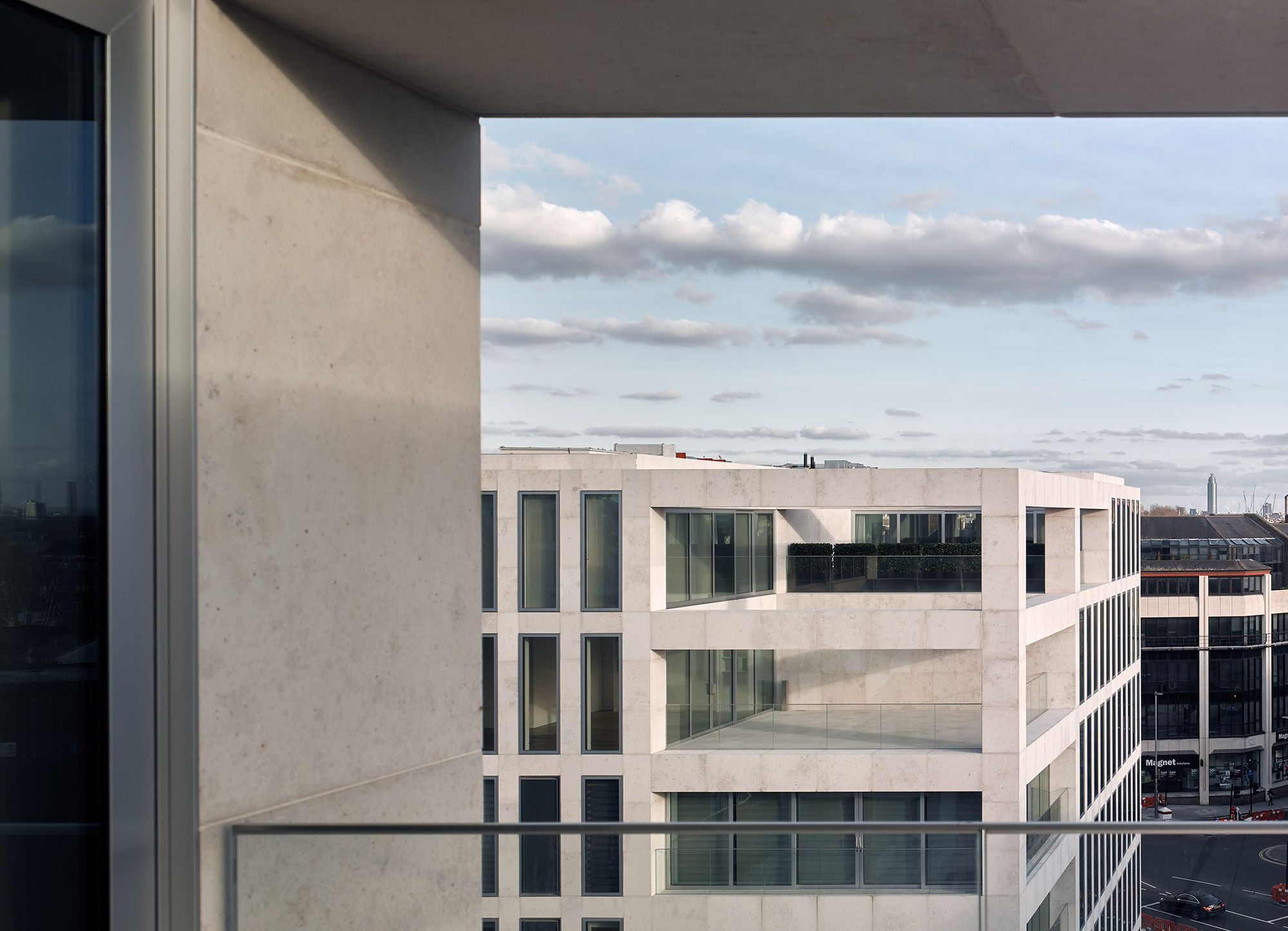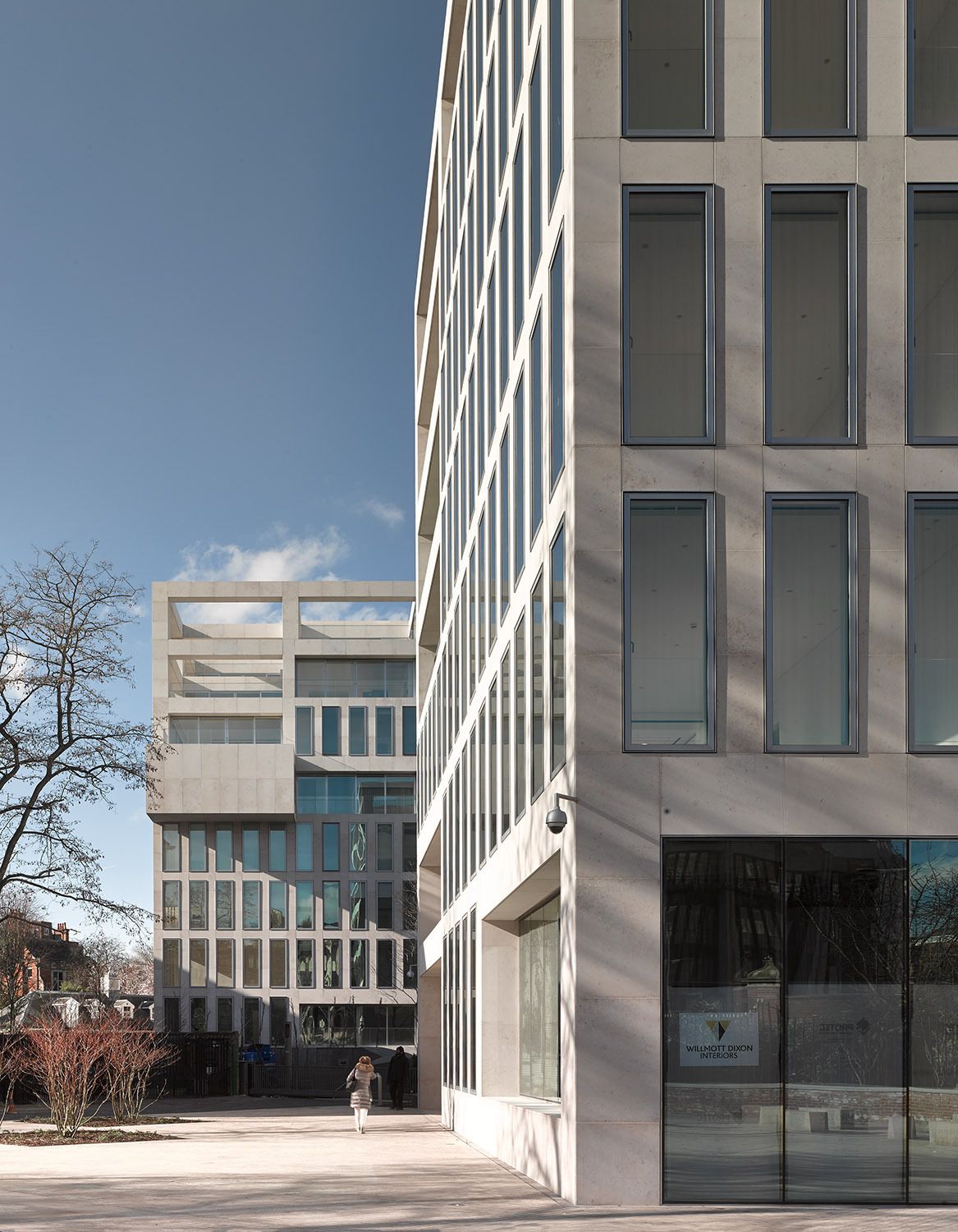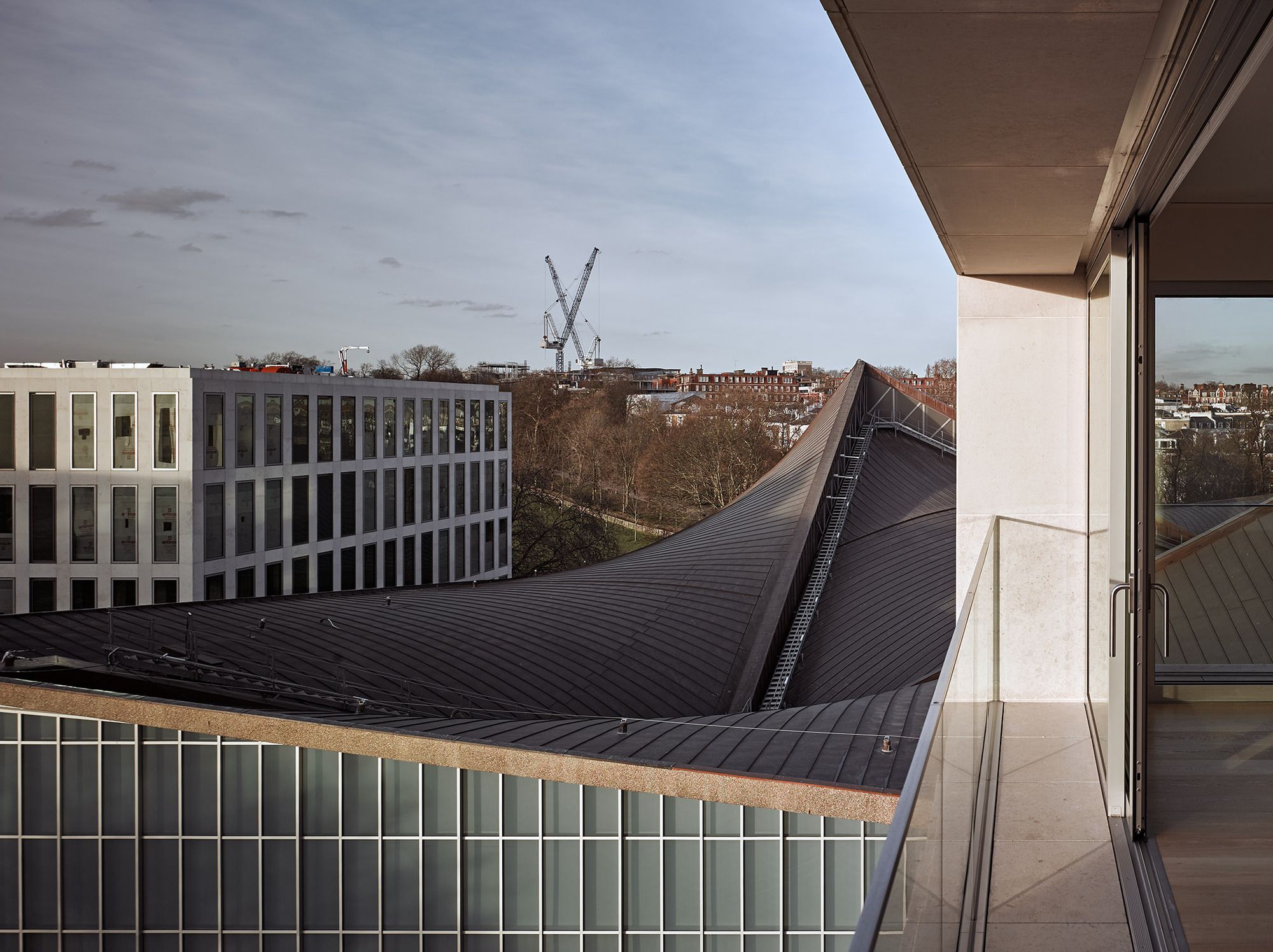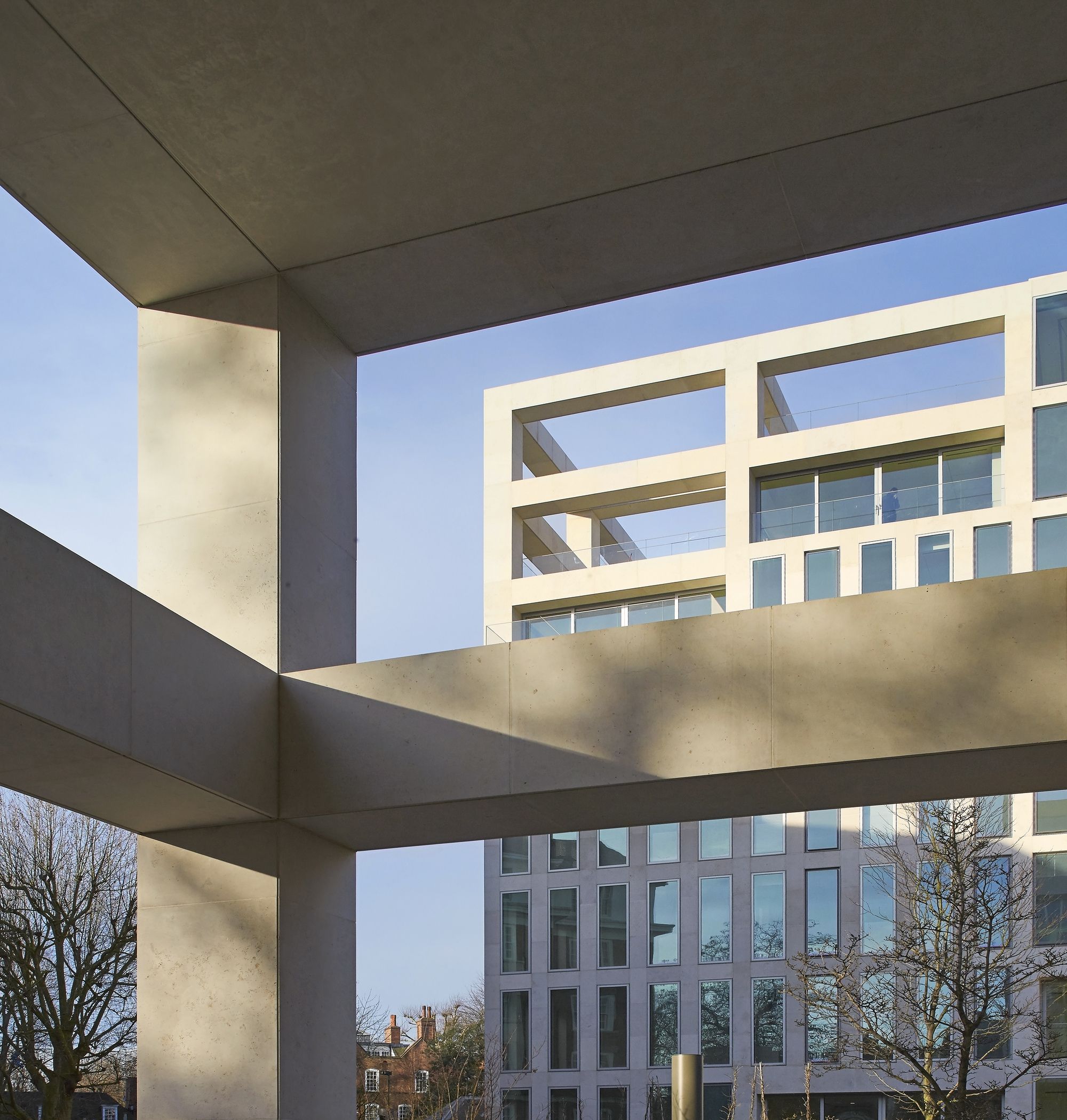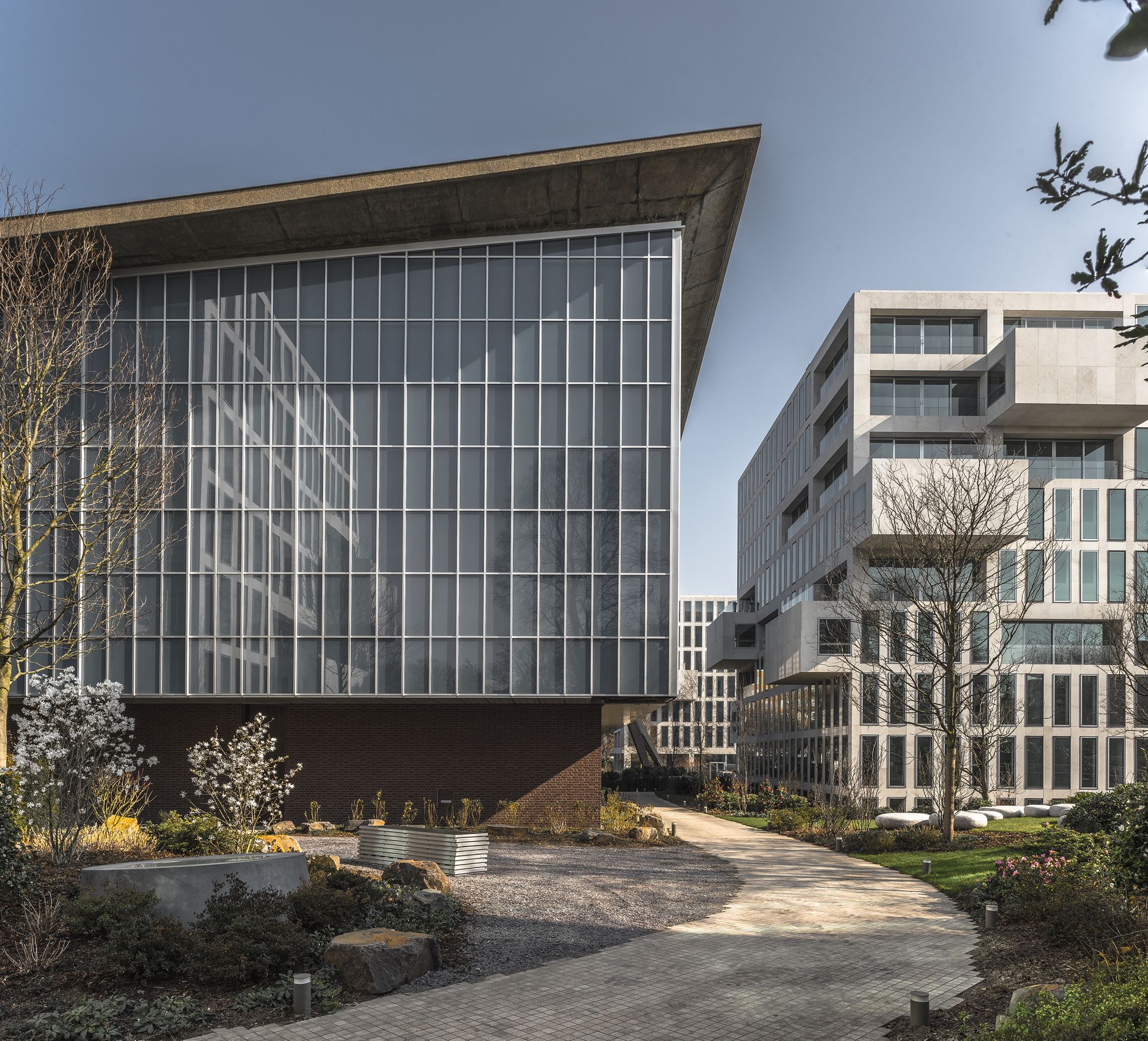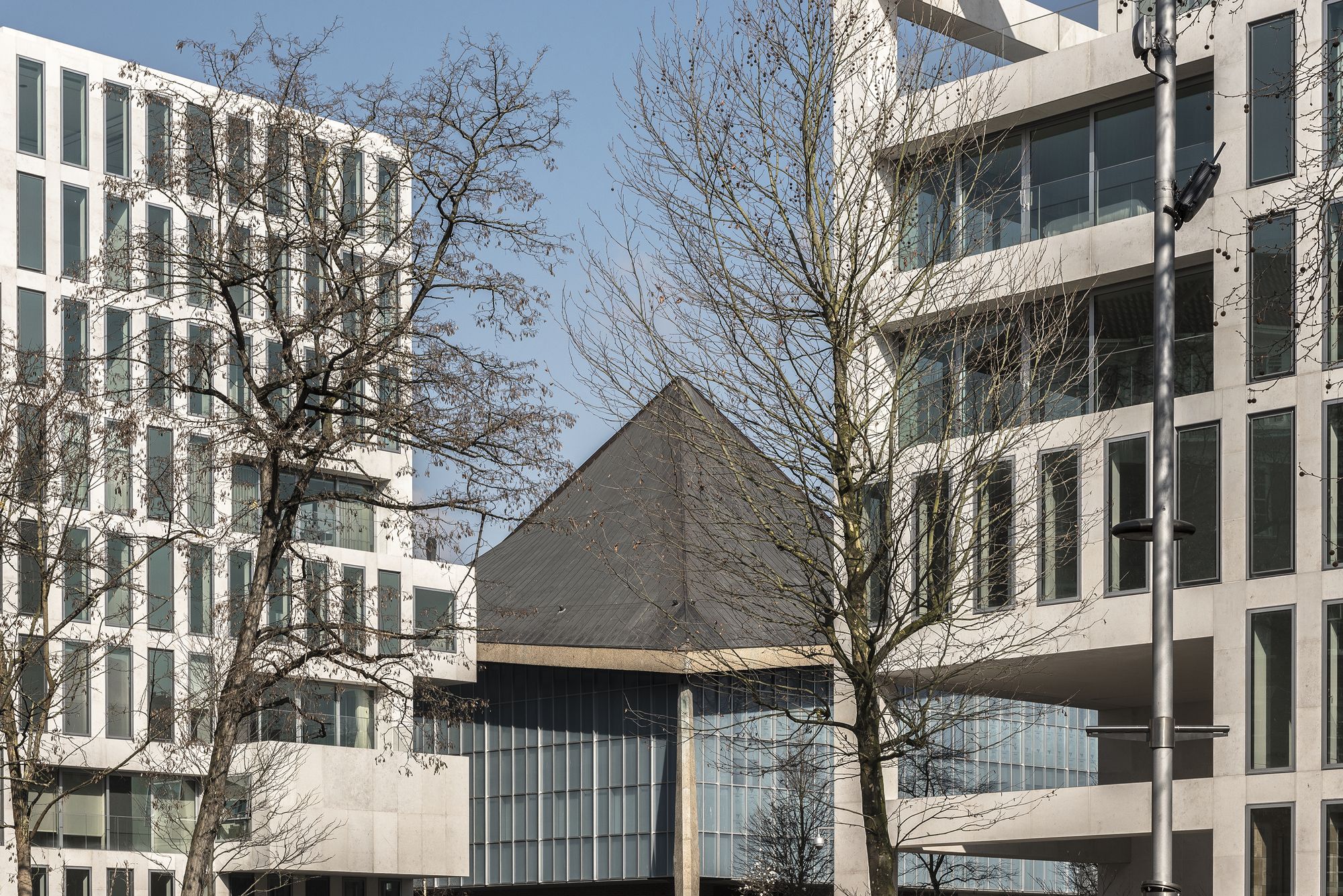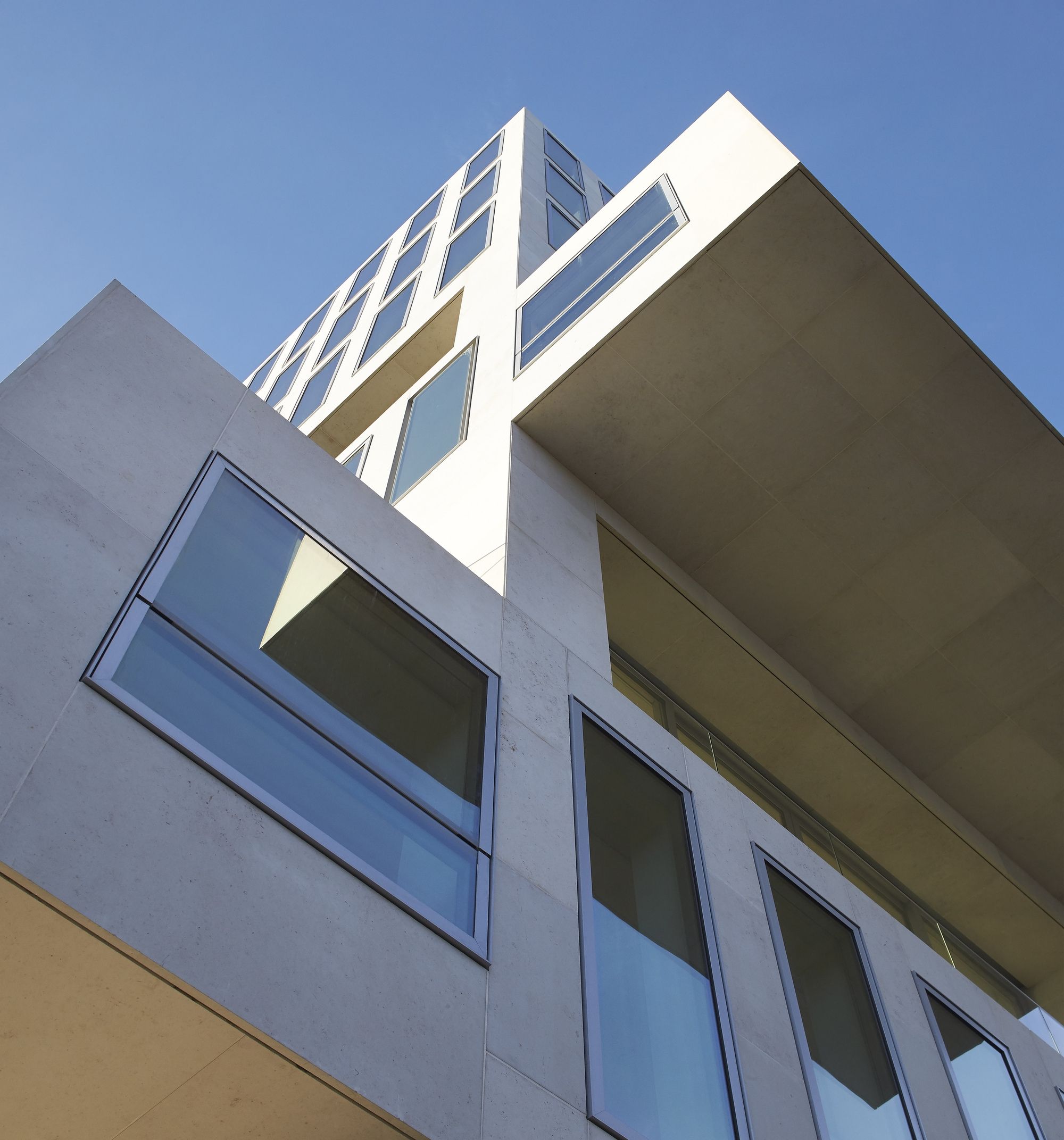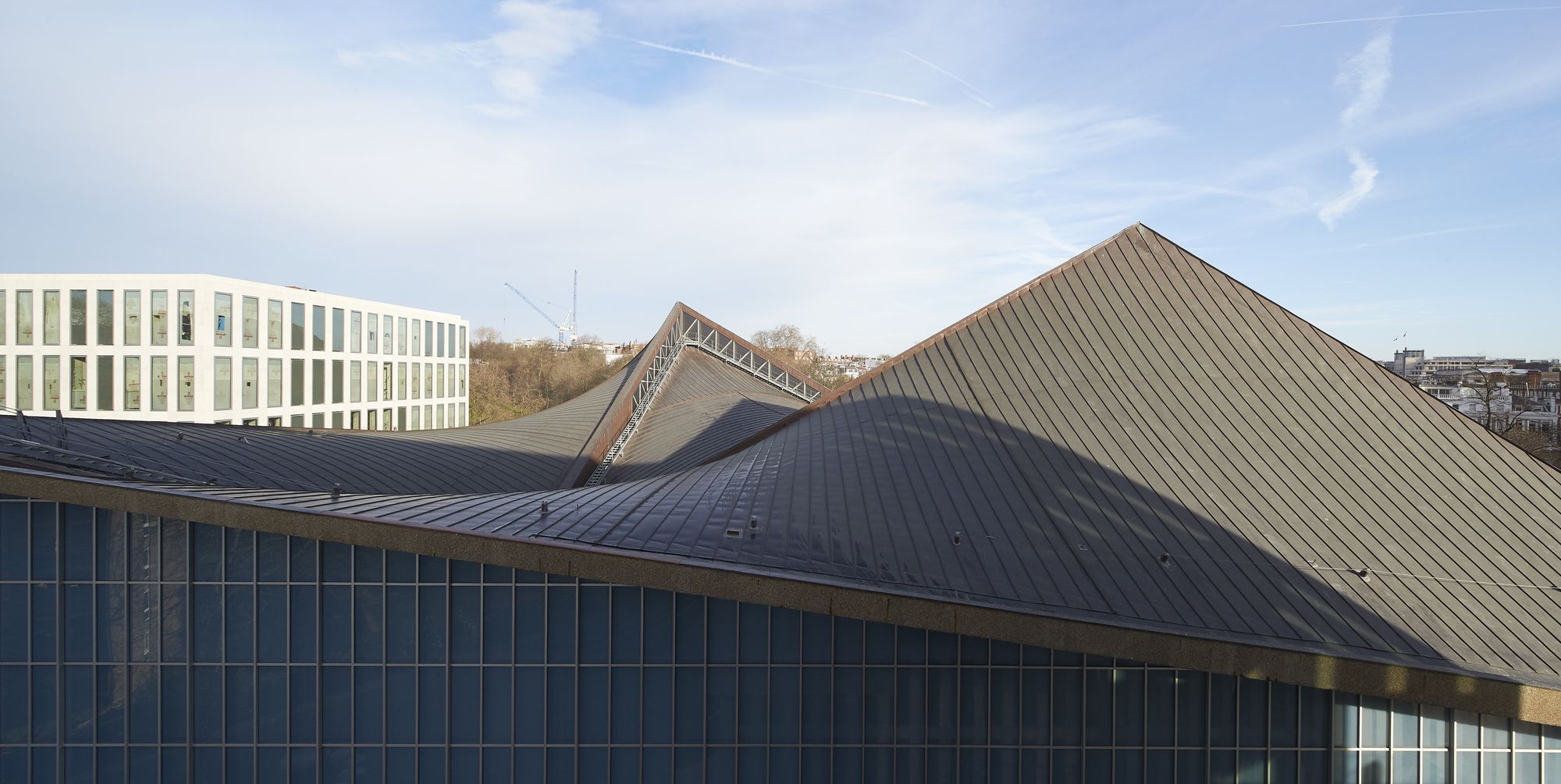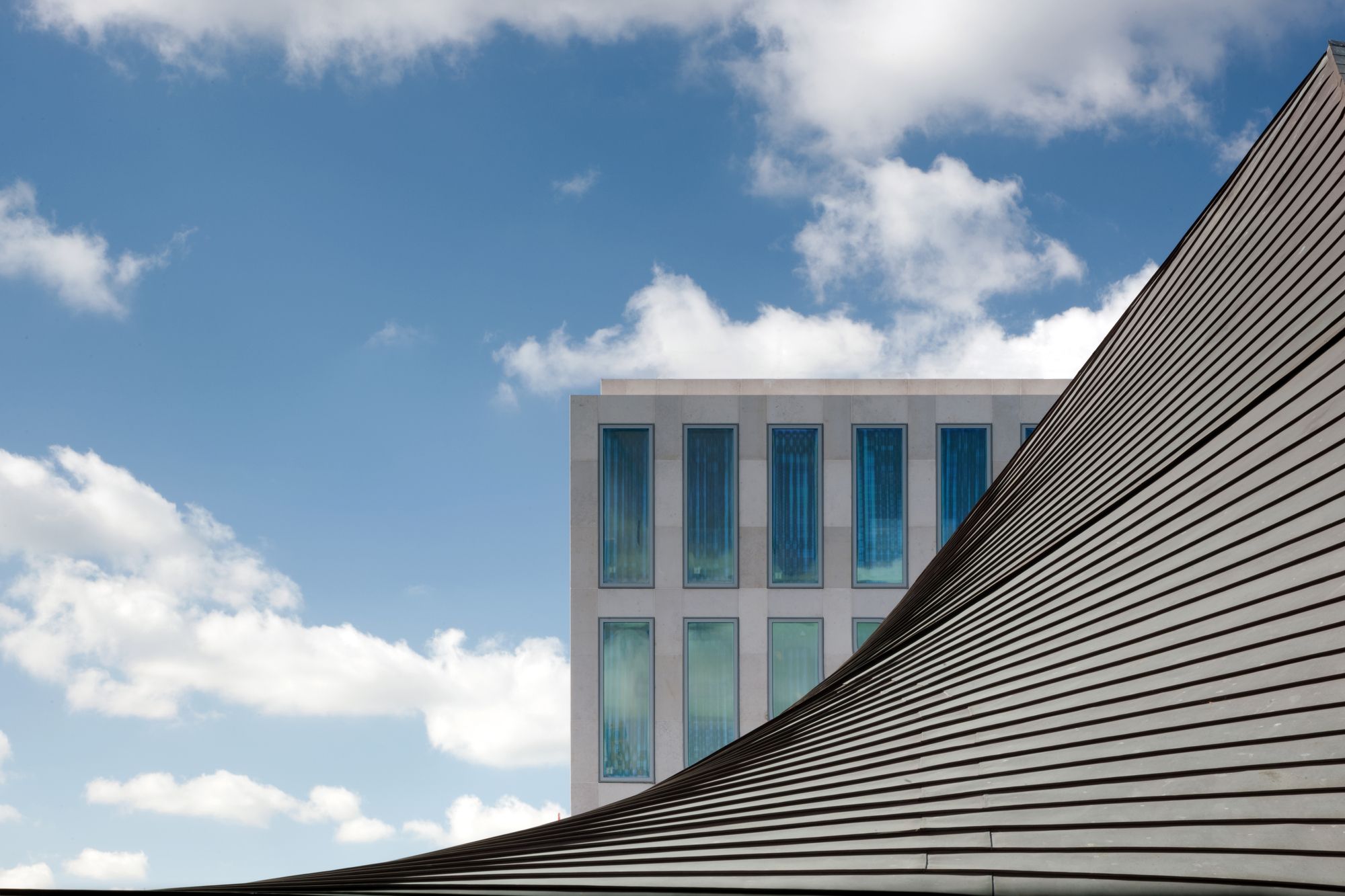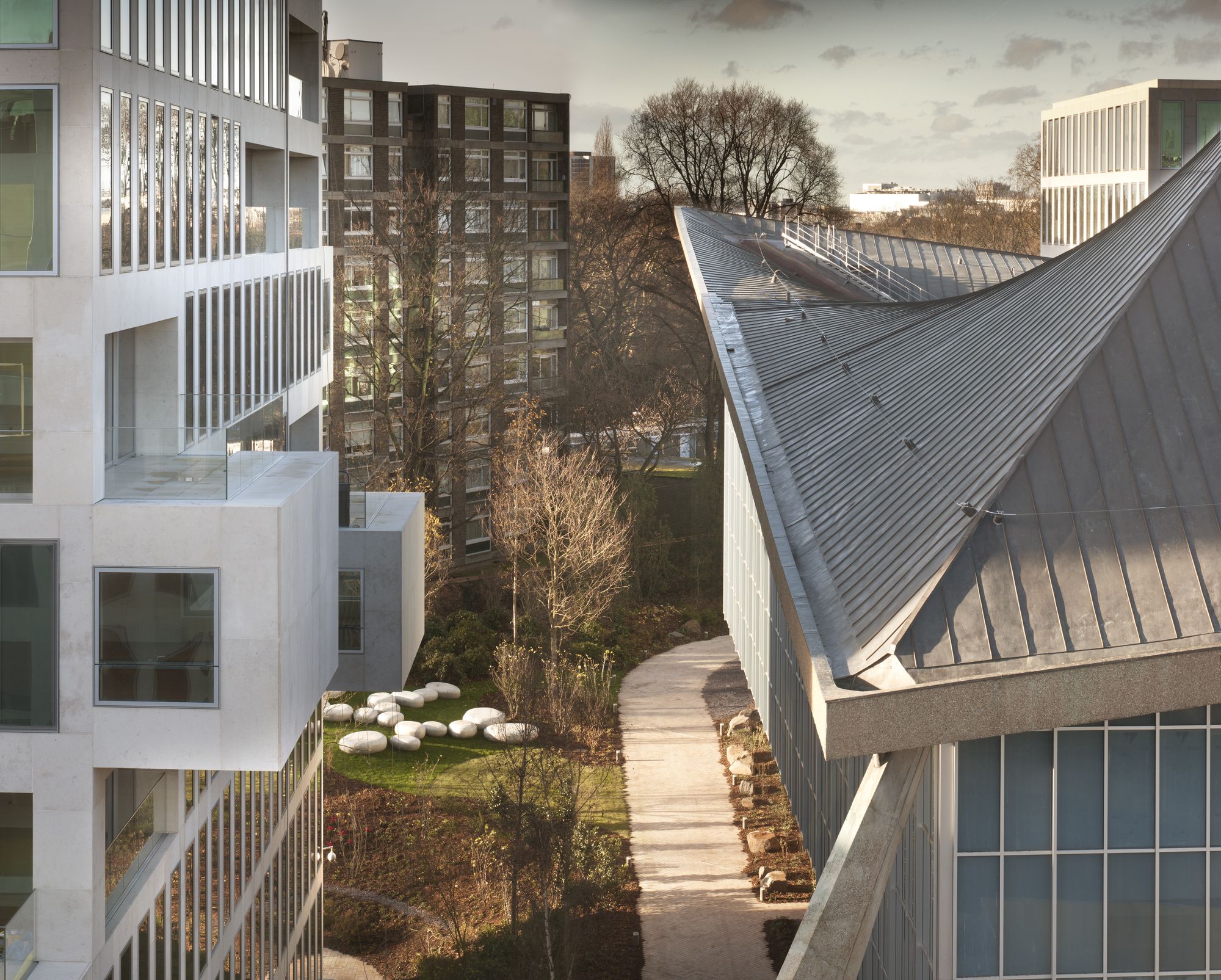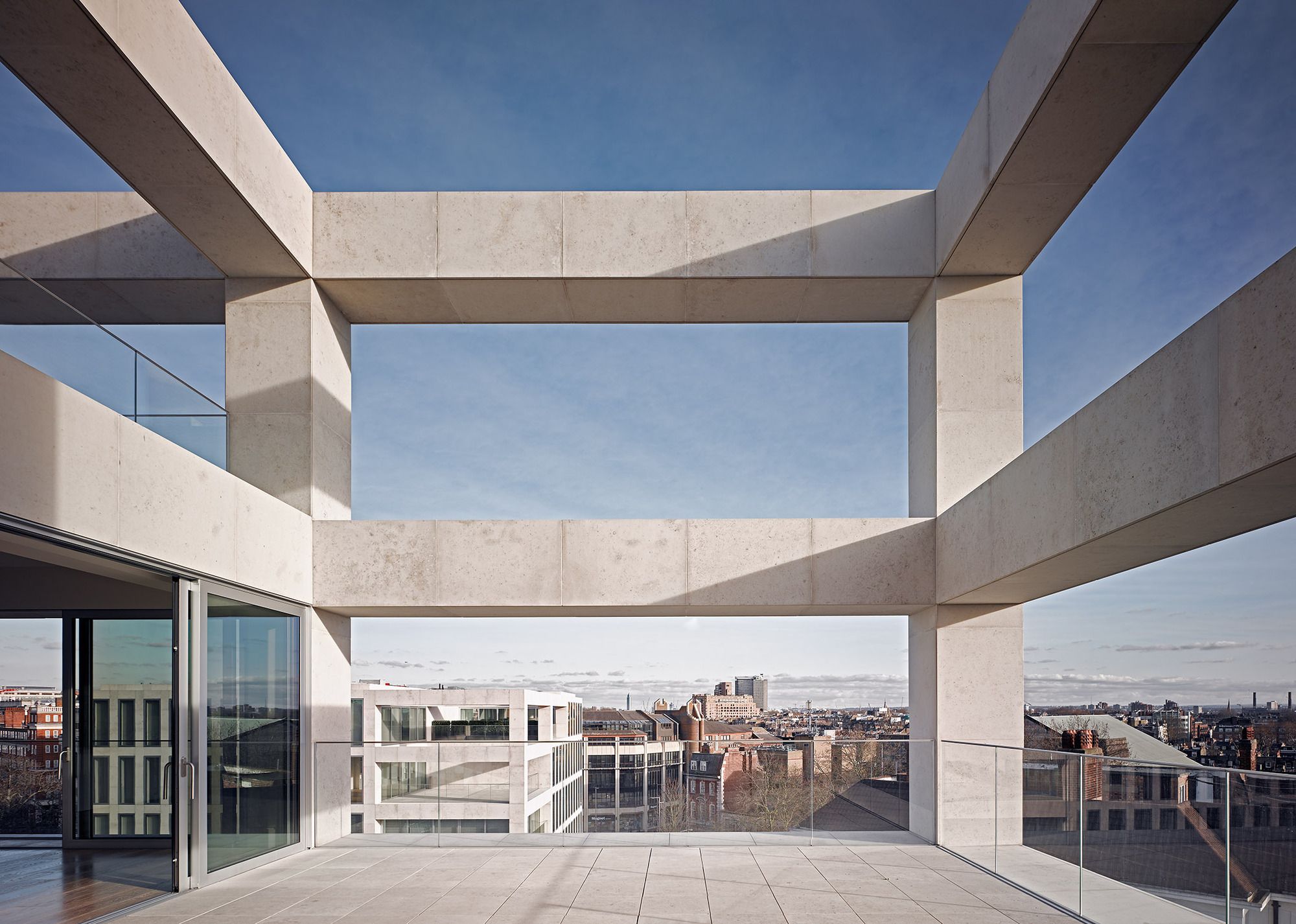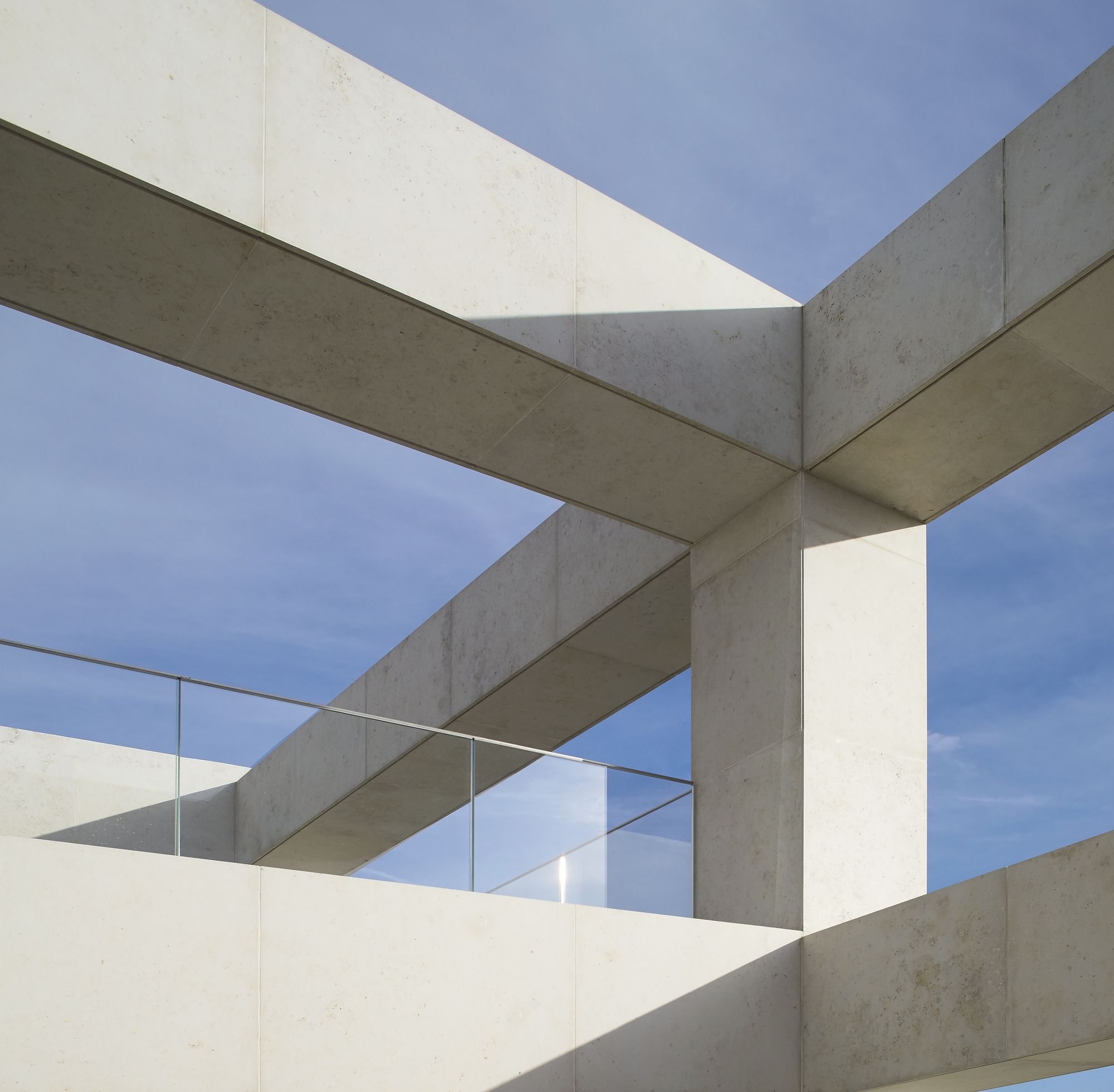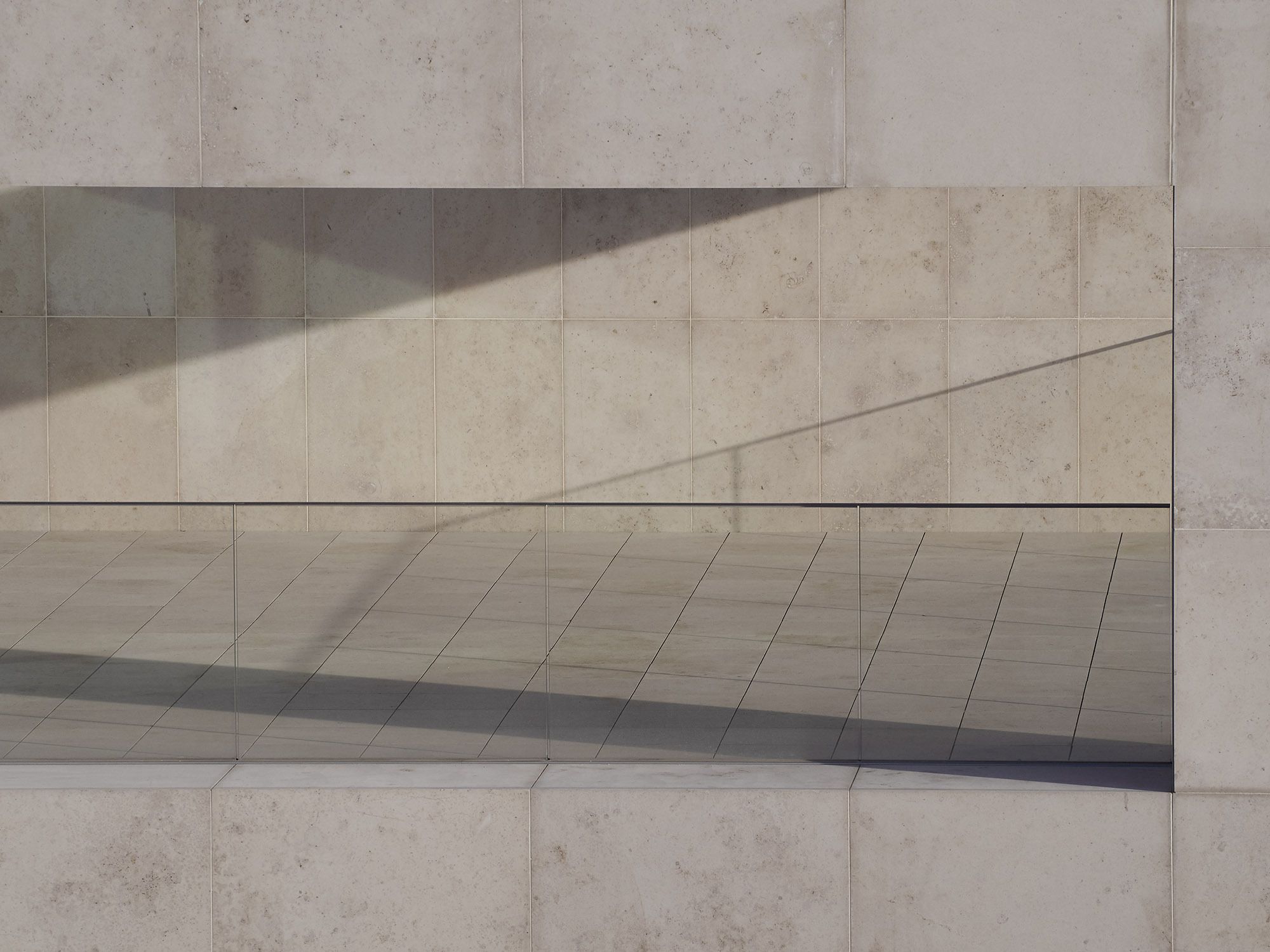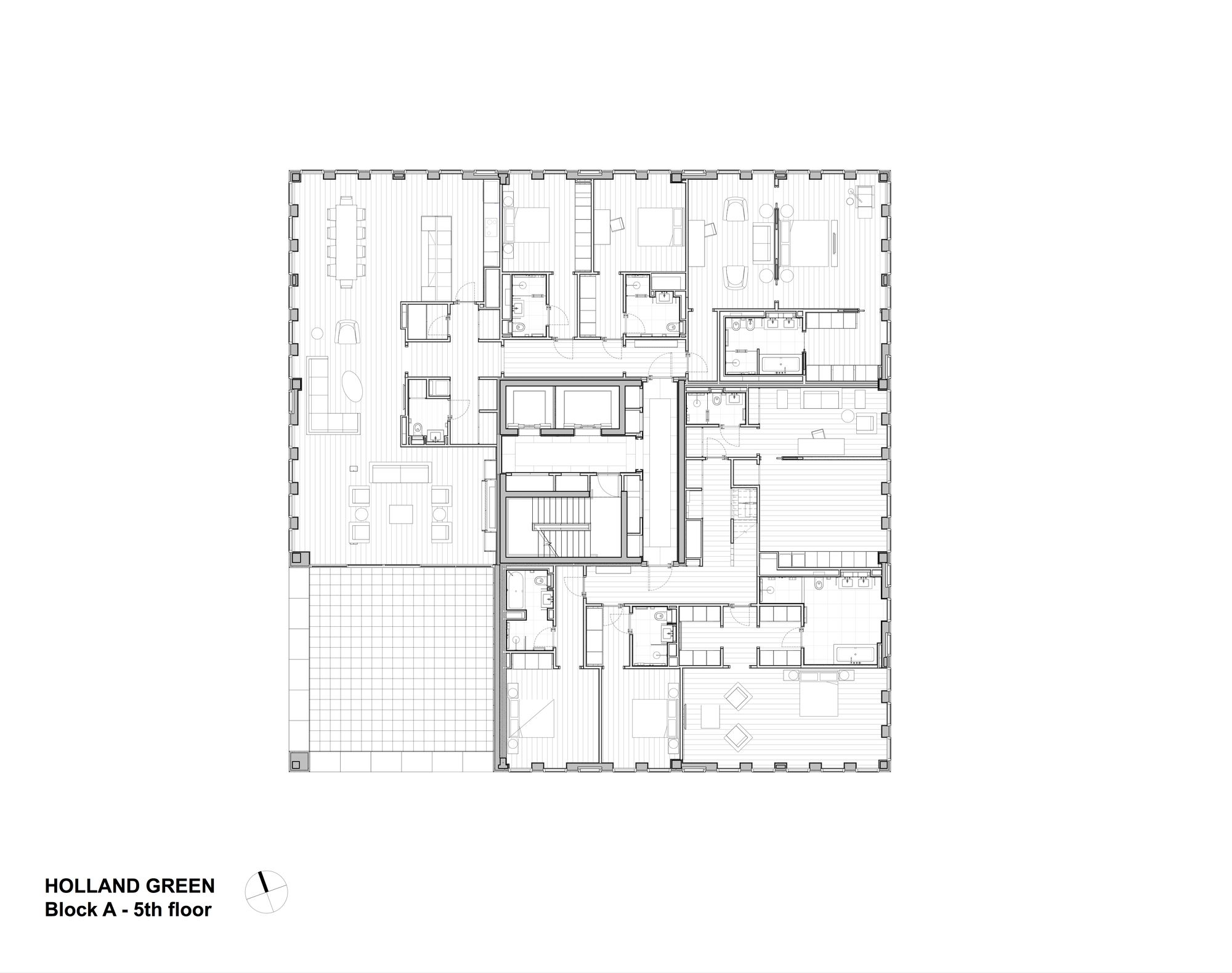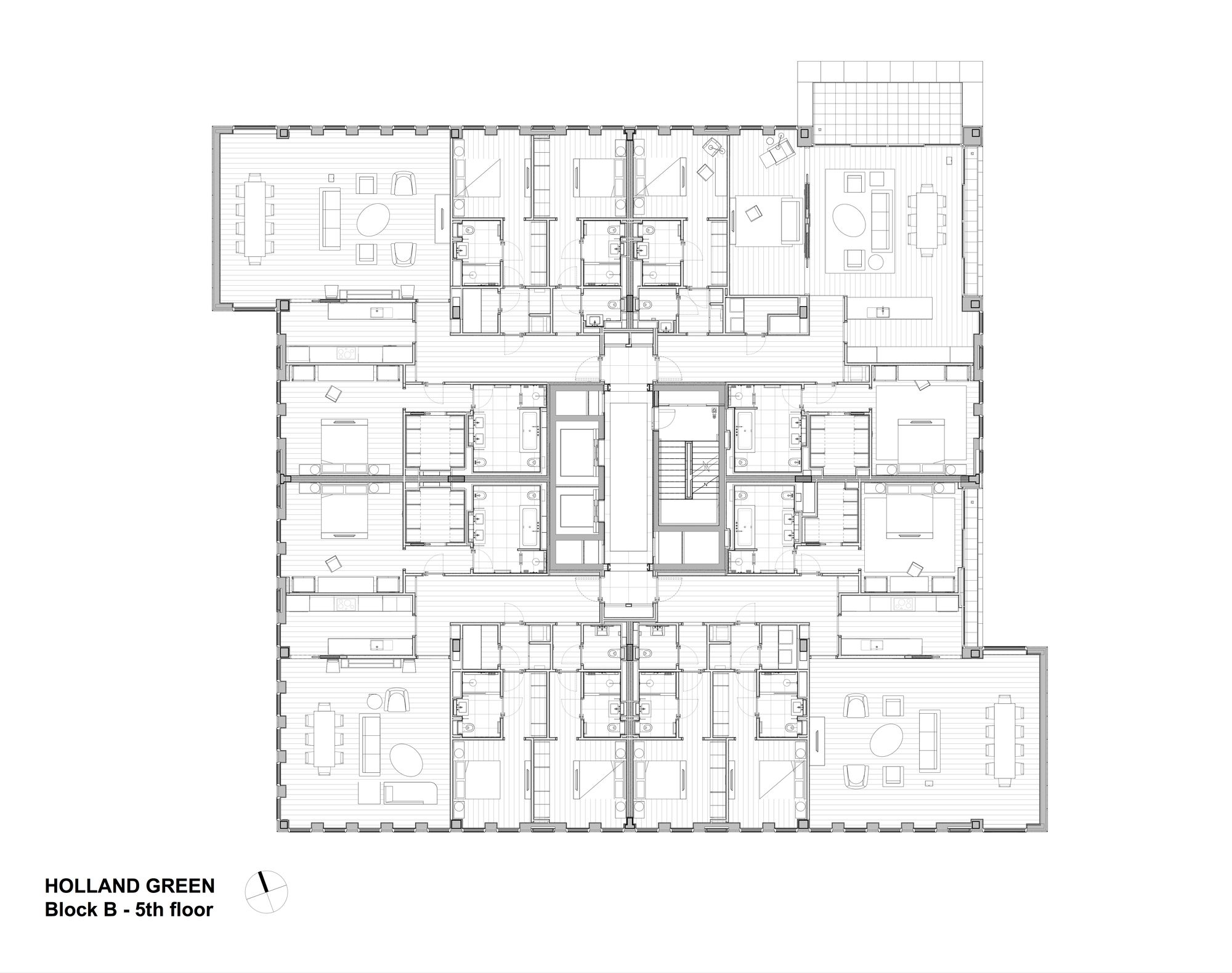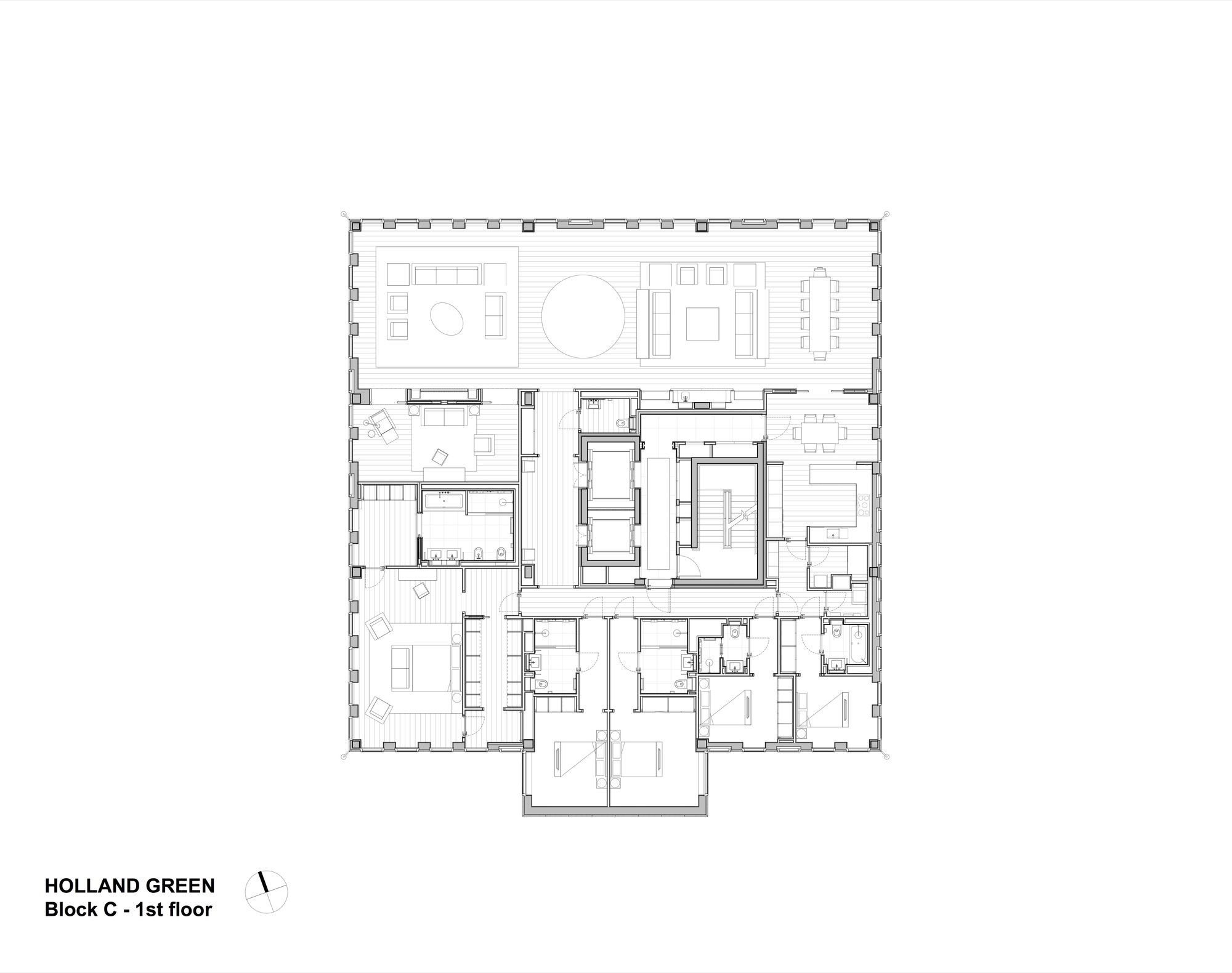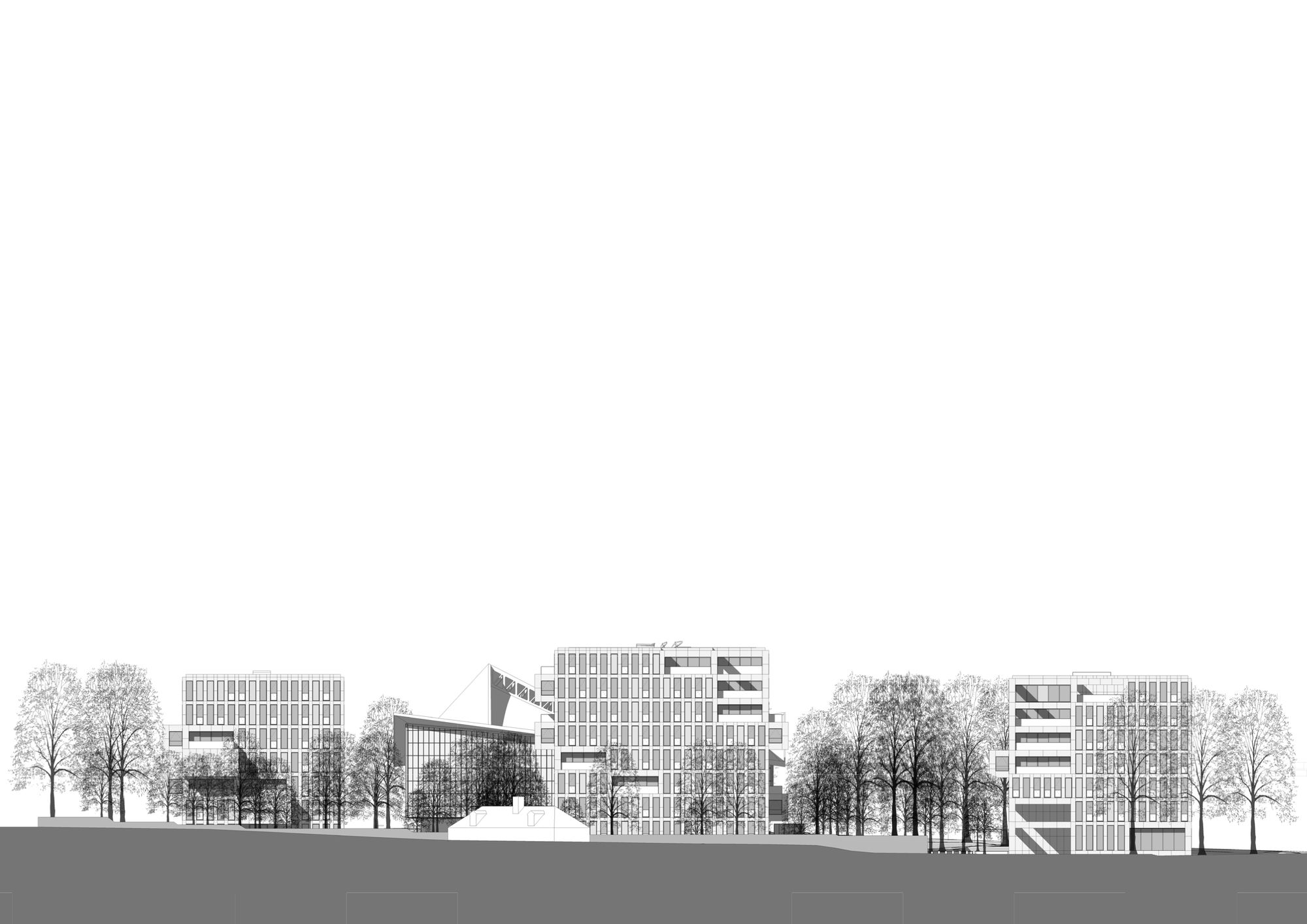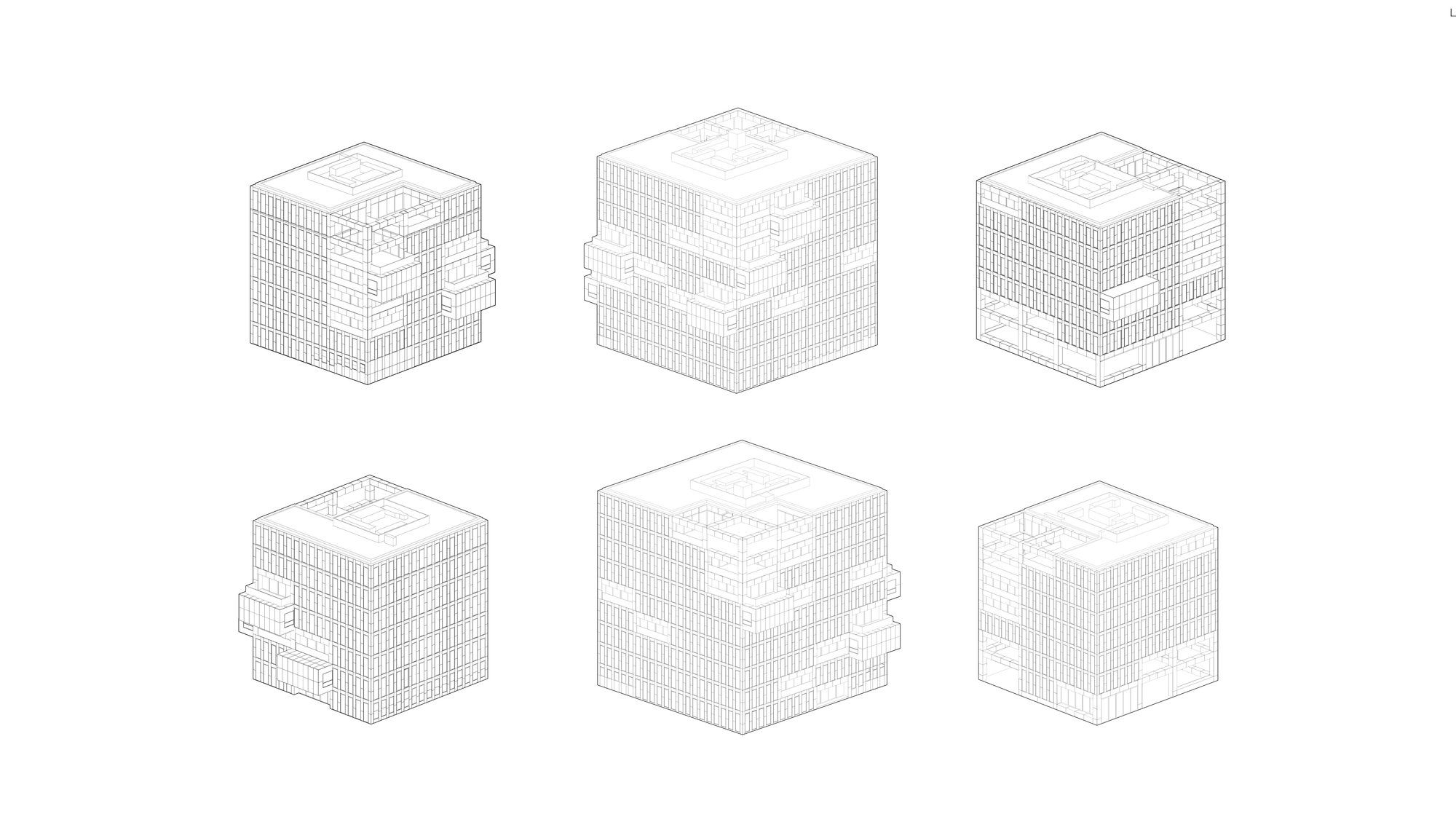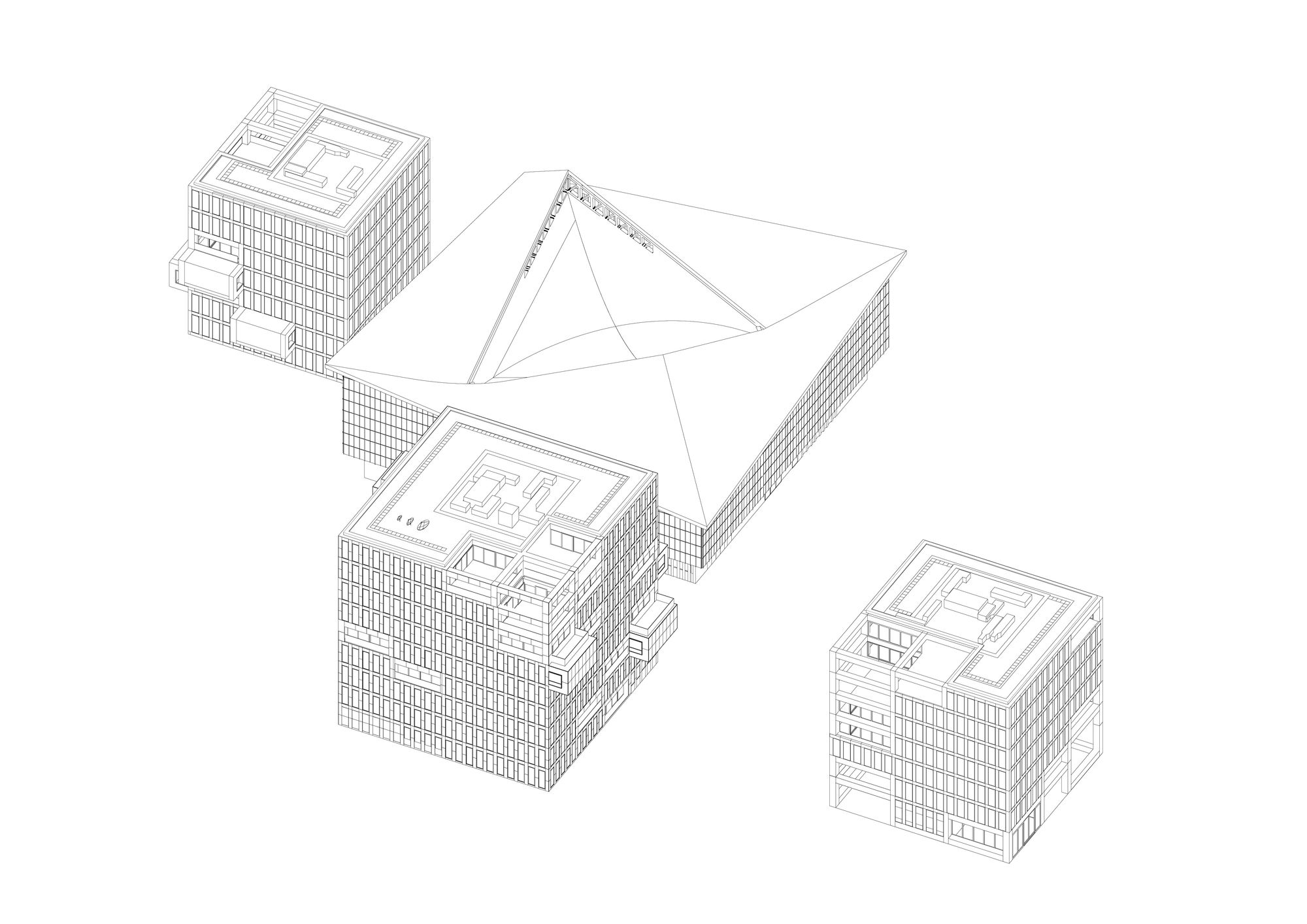Holland Green
The Holland Green residences designed by OMA with Allies and Morrison reflect not only the design practices’ latest creative endeavour but also stand for a forgotten aspect of the rich history of the English.
The transition from the British Empire to the Commonwealth was marked by the construction of the Commonwealth Institute in 1962. It was designed by Robert Matthew, Johnson-Marshall and Partners, and has been an important legacy of the English Heritage. With the motive to protect it, it was listed as a building with special architectural interest by the government in 1988 and 1990. However, it was eventually closed to the public, being rendered functionally purposeless in 2002 after having just undergone refurbishment. In 2006, the government tried to delist it in a fruitless attempt and the building was saved from demolition.
Instead of leaving the building as it is, a competition was held for the design of residences around the Commonwealth institute, replacing its administration wing. The residences would serve the purpose of funding for the redesign and complete change in the functional usage of this main hall.
OMA won with its keen insight- the demolition of the administration wing was seen as liberation of the main hall. It would take upon the identity of a ‘tent in a park’ as it was originally intended to be. It would become the central focus of an ‘ensemble of buildings’.
“Within this ensemble, each building is scaled proportionally – like Russian Dolls – to react to the scale of its immediate surroundings: The front building, set back from the street to maintain the existing plaza condition, responds to the scale of the neighbouring buildings on Kensington High Street. The largest of the three new buildings, tucked back within the site, concealed from both Holland Park and the High Street, corresponds to the height of Park Close’s two adjacent sixties’ buildings. The smallest building, fronting the park, mimics the height of the Parabola,” explain the architects.
The dynamic main hall with its parabolic roof is met with the clean straight lines of the residential buildings. It is perhaps due to the geometric nature of the two that these vastly different buildings sit together in a harmonious match. “The calm, orthogonal geometries of the new residential buildings pose a deliberate contrast to the dramatic hyperbolic geometries of the exhibition hall’s roof. The facades of the new buildings register the amplitude of the roof’s curvature like ‘graph paper’.”
The façade seems to be defined by a musical rhythm in its geometry. OMA has succeeded in making a simple grid structure not at all dull.
“Each residential façade is a hybrid of two different façade types: one being an array of identical vertical windows, the other essentially an expression of the buildings’ structural grid. The latter offers the apartments magnificent views and also incorporates their outdoor spaces, including the large terraces on the upper floors. The two façade types coexist in a seemingly accidental relationship. The addition of skyboxes gives a certain plasticity to the building volumes, allowing (some of) the apartments to extend outside the building perimeter, redirecting the view back to one’s own façade.”
“The Commonwealth institute’s main exhibition hall will be the new home of the Design Museum, offering nearly three times the space of original location at Shad Thames, meanwhile dedicated to house Zaha Hadid’s archives. With the exception of the roof and it’s supporting structure, the building has been almost entirely rebuilt. A new basement has been installed beneath the full footprint, and the floors within have been rebuilt at new levels to accommodate the needs of the Design Museum. The outmoded 1960s facades have been replaced with energy efficient fritted facades, designed to resemble the original. The refurbishment of the Commonwealth exhibition hall has been funded from revenue made from the residential development to the point that the Design Museum has been offered a for-purpose-building as though it were new, without the obligation to pay rent.”
“Underneath, there is a continuous basement, connecting the three residential buildings and the Design Museum at a single service level. Car parking and storage space are provided for the residences with private access to each residential block, alongside service access to the Design Museum. This basement also houses a number of collective facilities for the residents, such as a spa sky-lit swimming pool, cinema, and gym.”
“Intended as a composition of free-standing buildings in a green setting, the design of the landscape is of primary importance. Its romantic character is intended to contrast with the angular geometries of the buildings, endowing the modern architecture with a deliberate ambiguity. Vehicles (as much as possible) are banned from the site, leaving the possibility of a landscape with almost seamless transitions between hard- and soft-scape.”
Project Information :
Architect : OMA , Allies and Morrison
Location : Kensington High St, Kensington, London W8, United Kingdom
Project Year: 2016
Total Area : 323000.0 ft2
By: Sahiba Gulati
Photography by © Nick Gutteridge
Photography by © Nick Gutteridge
Photography by © Sebastian van Damme
Photography by © Sebastian van Damme
Photography by © Sebastian van Damme
Photography by © Philip Vile
Photography by © Sebastian van Damme
Photography by © Hufton+Crow
Photography by © Nick Gutteridge
Photography by © Hufton+Crow
Photography by © Philip Vile
Photography by © Sebastian van Damme
Photography by © Nick Gutteridge
Photography by © Nick Gutteridge
Photography by © Nick Gutteridge
Photography by © Hufton+Crow
Photography by © Sebastian van Damme
Photography by © Sebastian van Damme
Photography by © Hufton+Crow
Photography by © Hufton+Crow
Photography by © Philip Vile
Photography by © Philip Vile
Photography by © Nick Gutteridge
Photography by © Hufton+Crow
Photography by © Nick Gutteridge
Block A - 5th Floor Plan
Block B - 5th Floor Plan
Block C - 1st Floor Plan
Elevation
Diagram
Diagram


